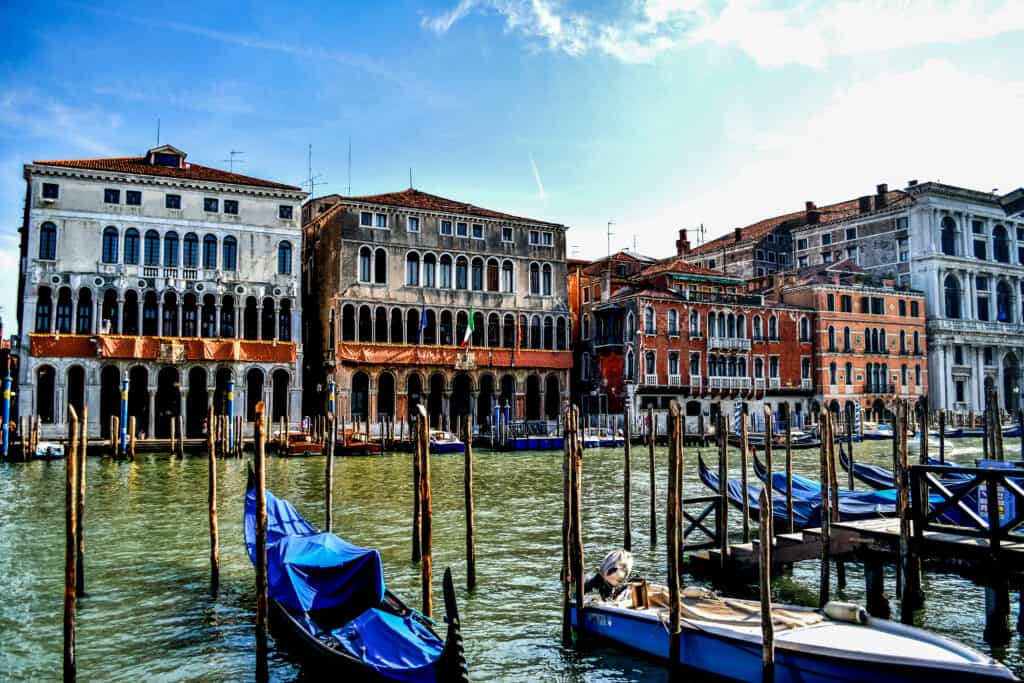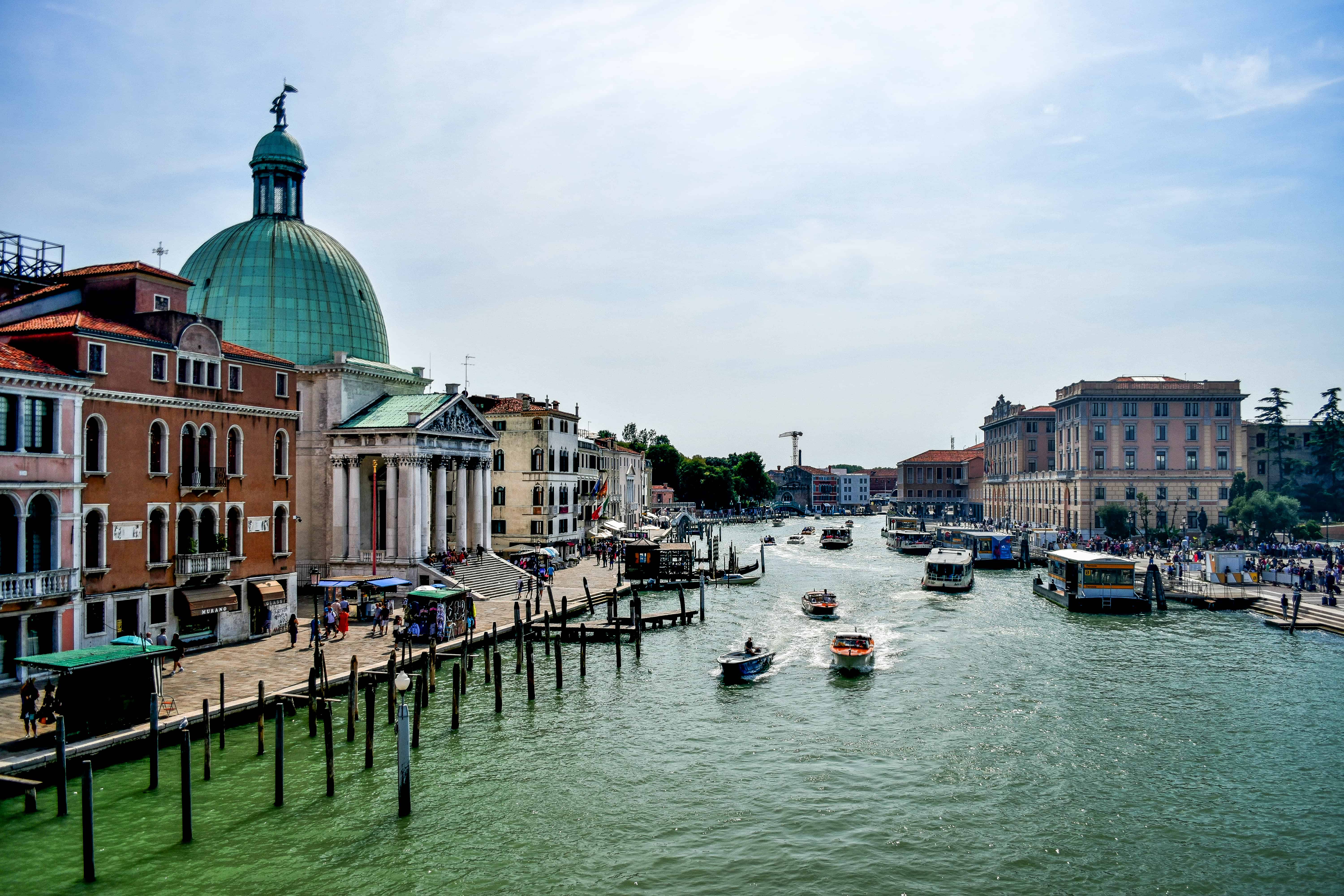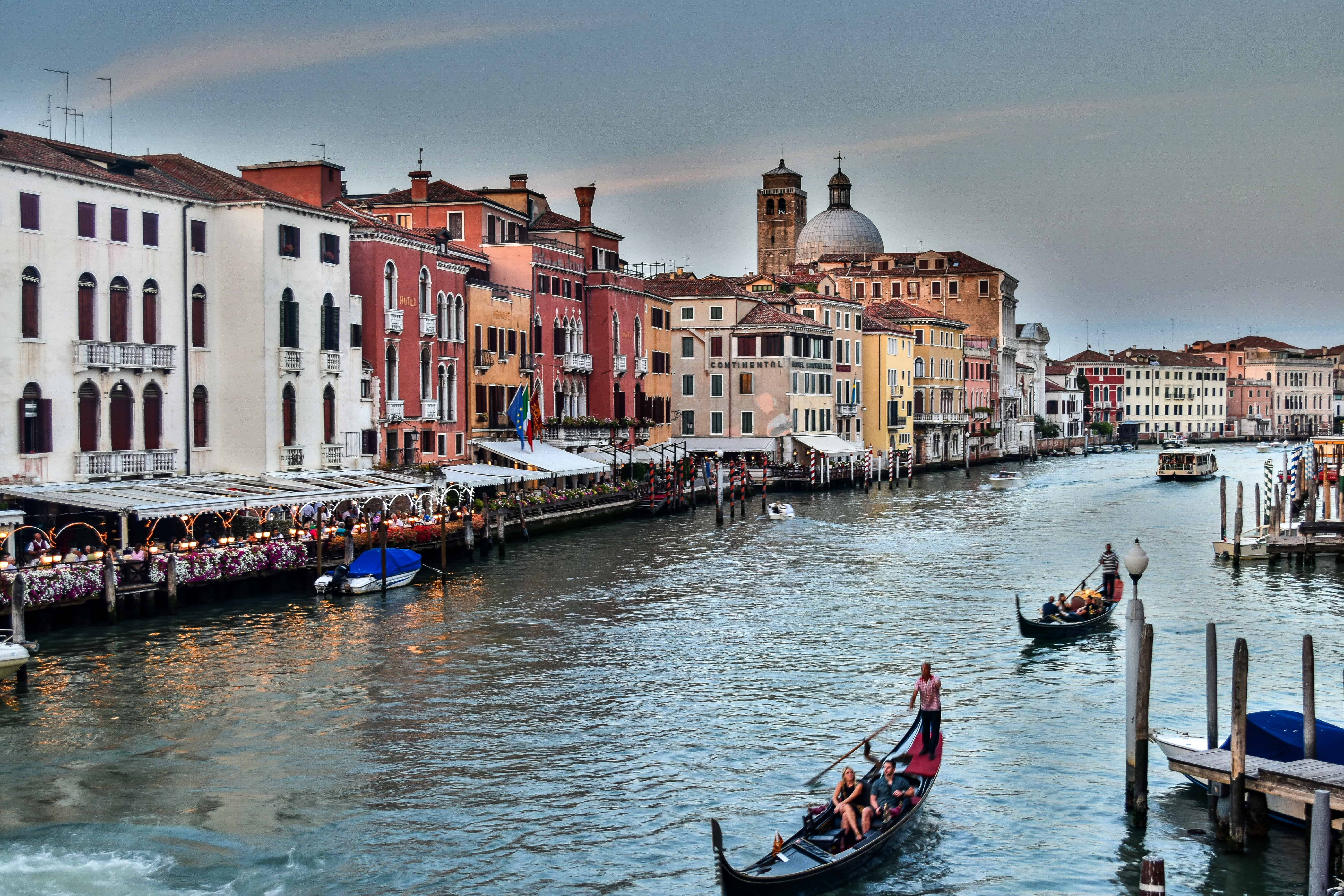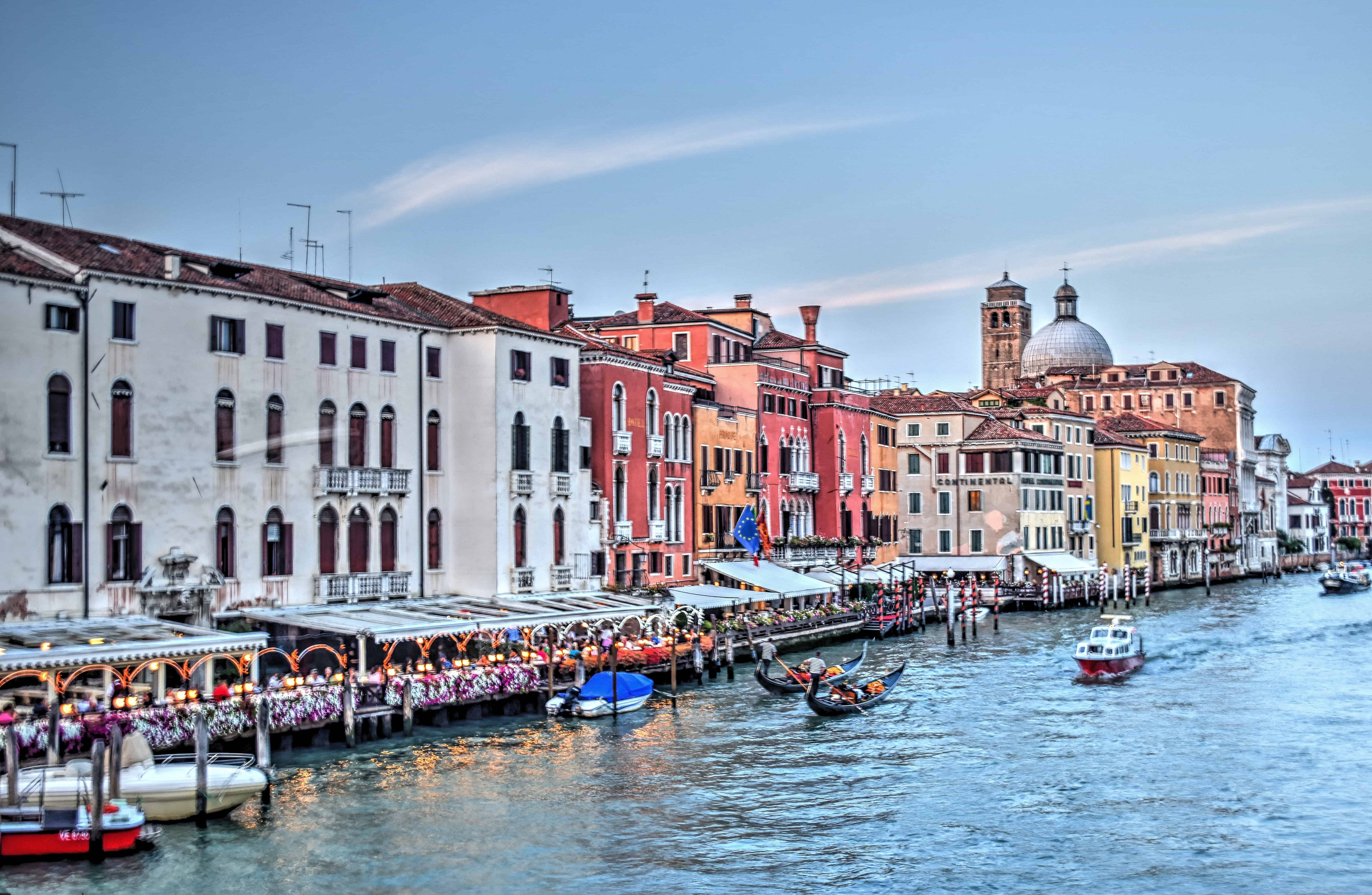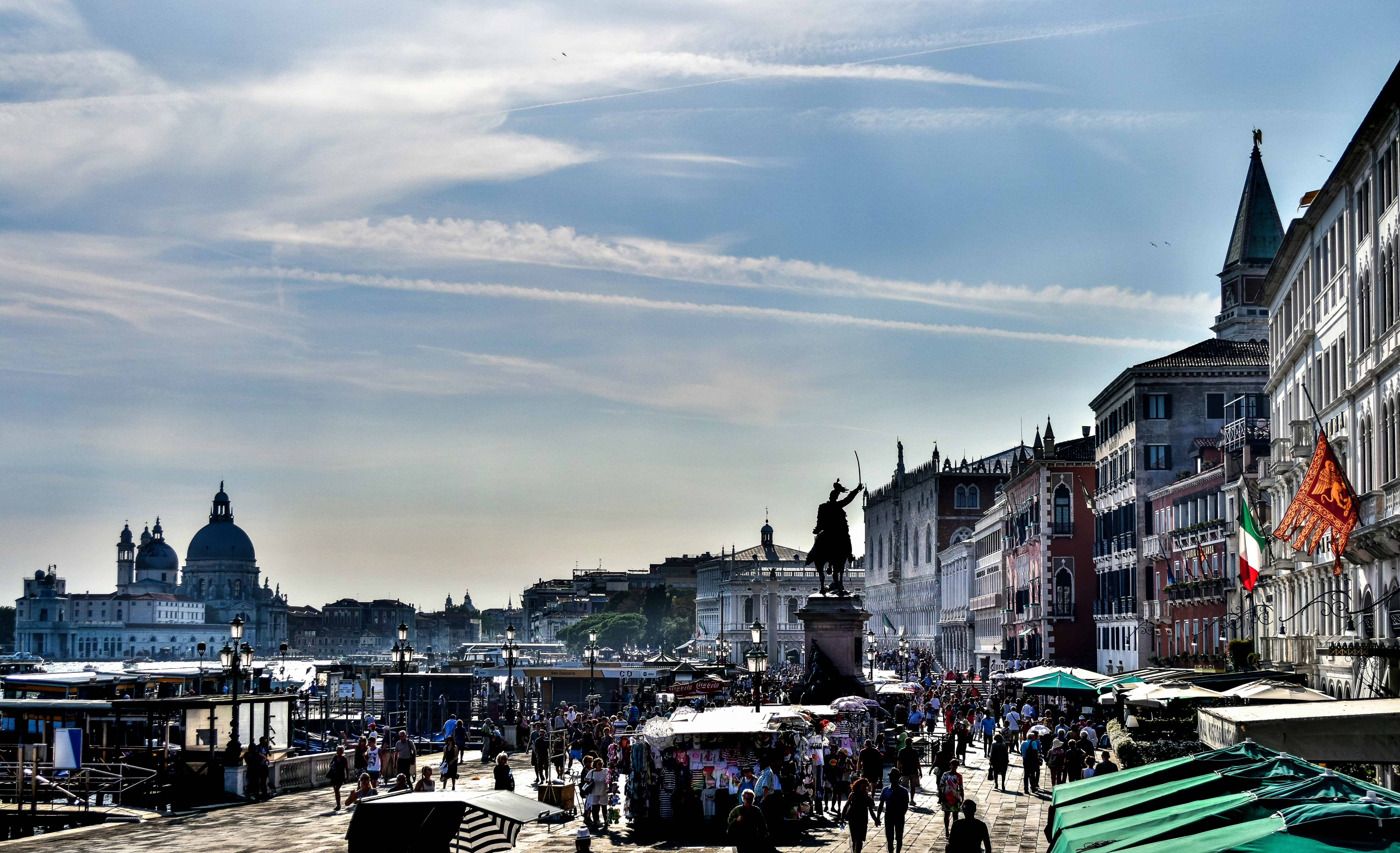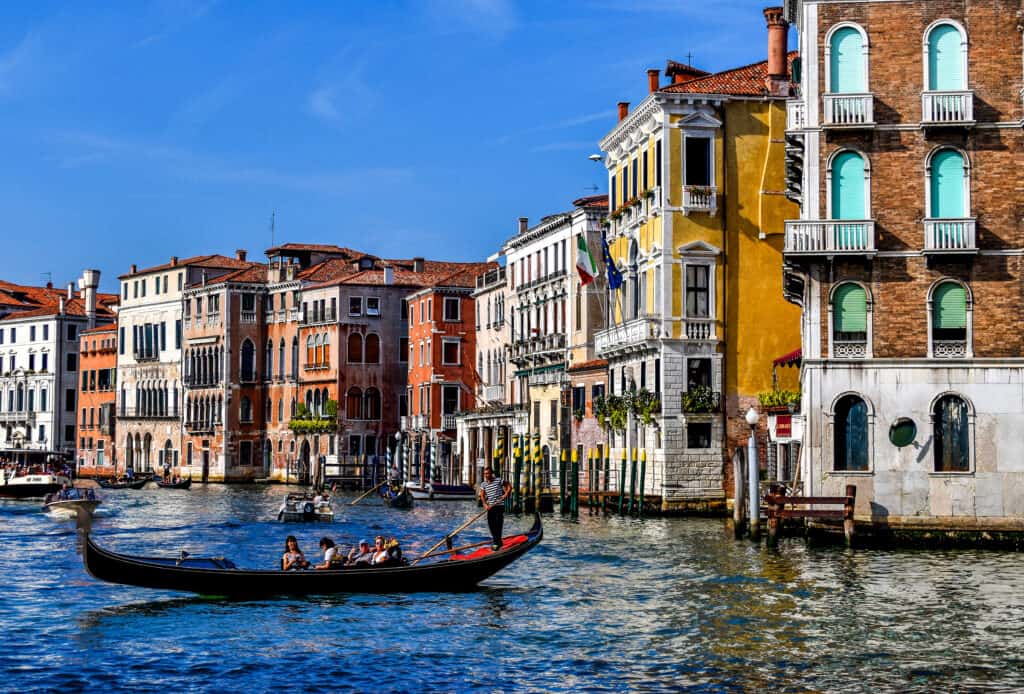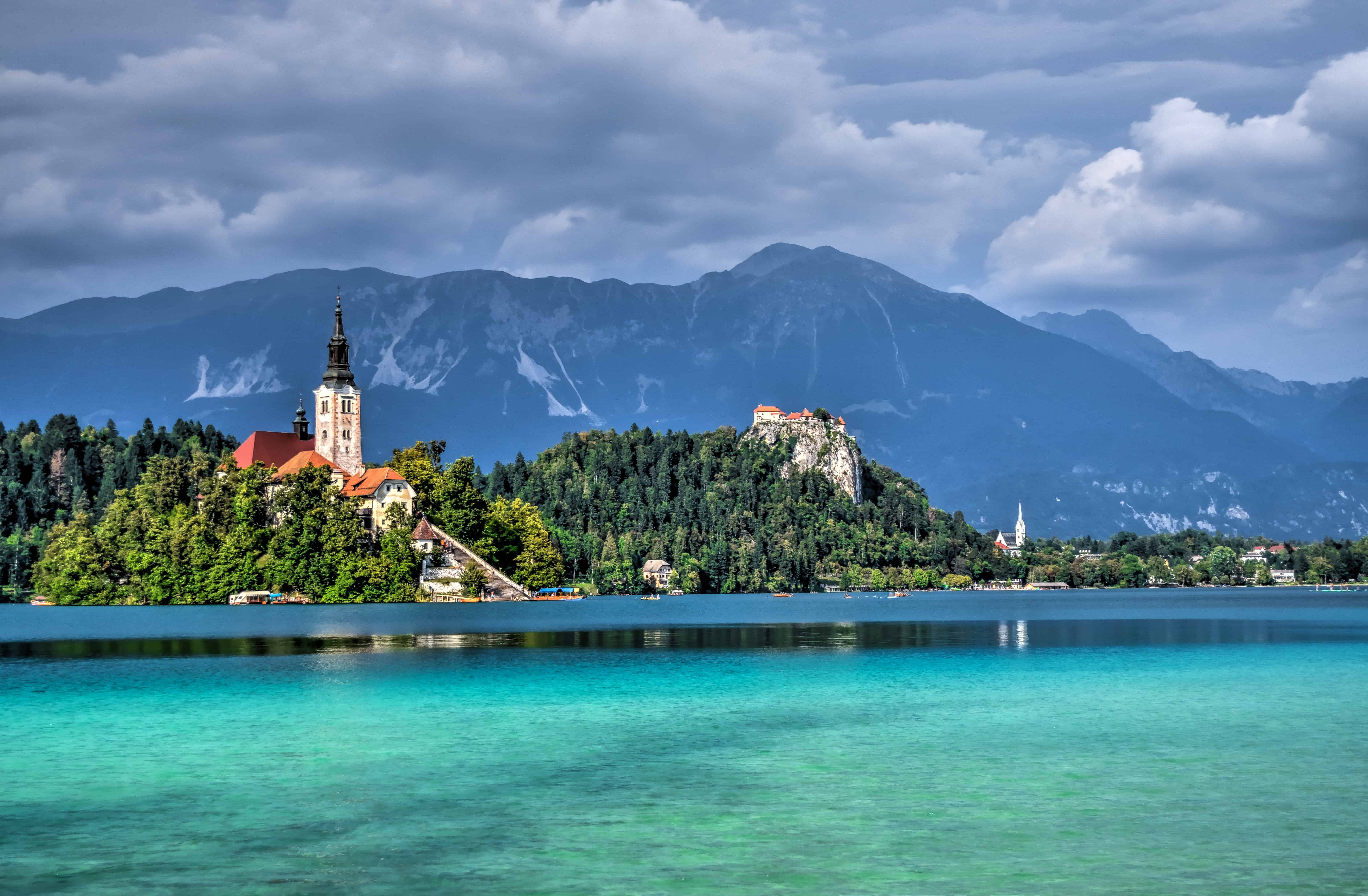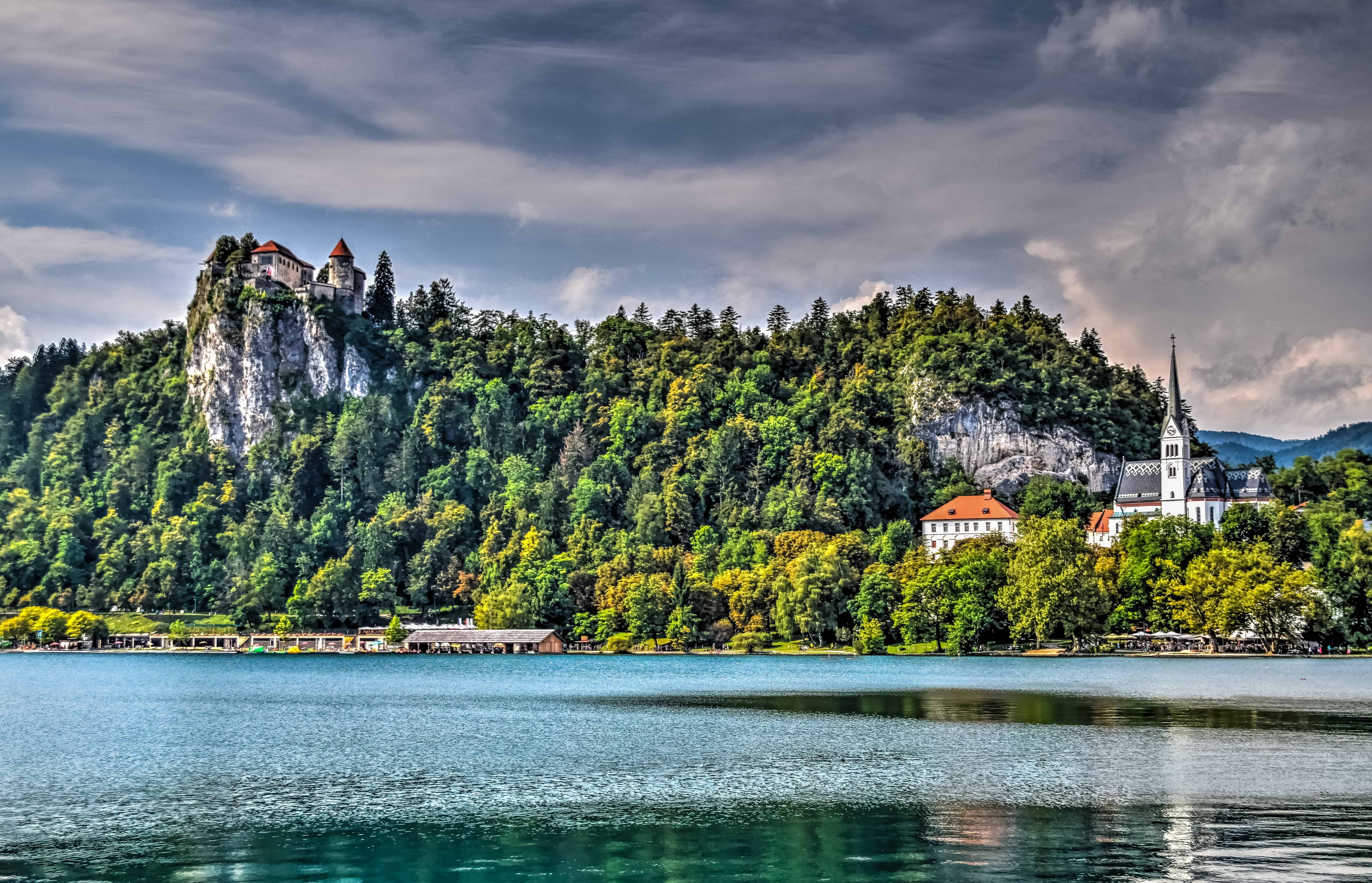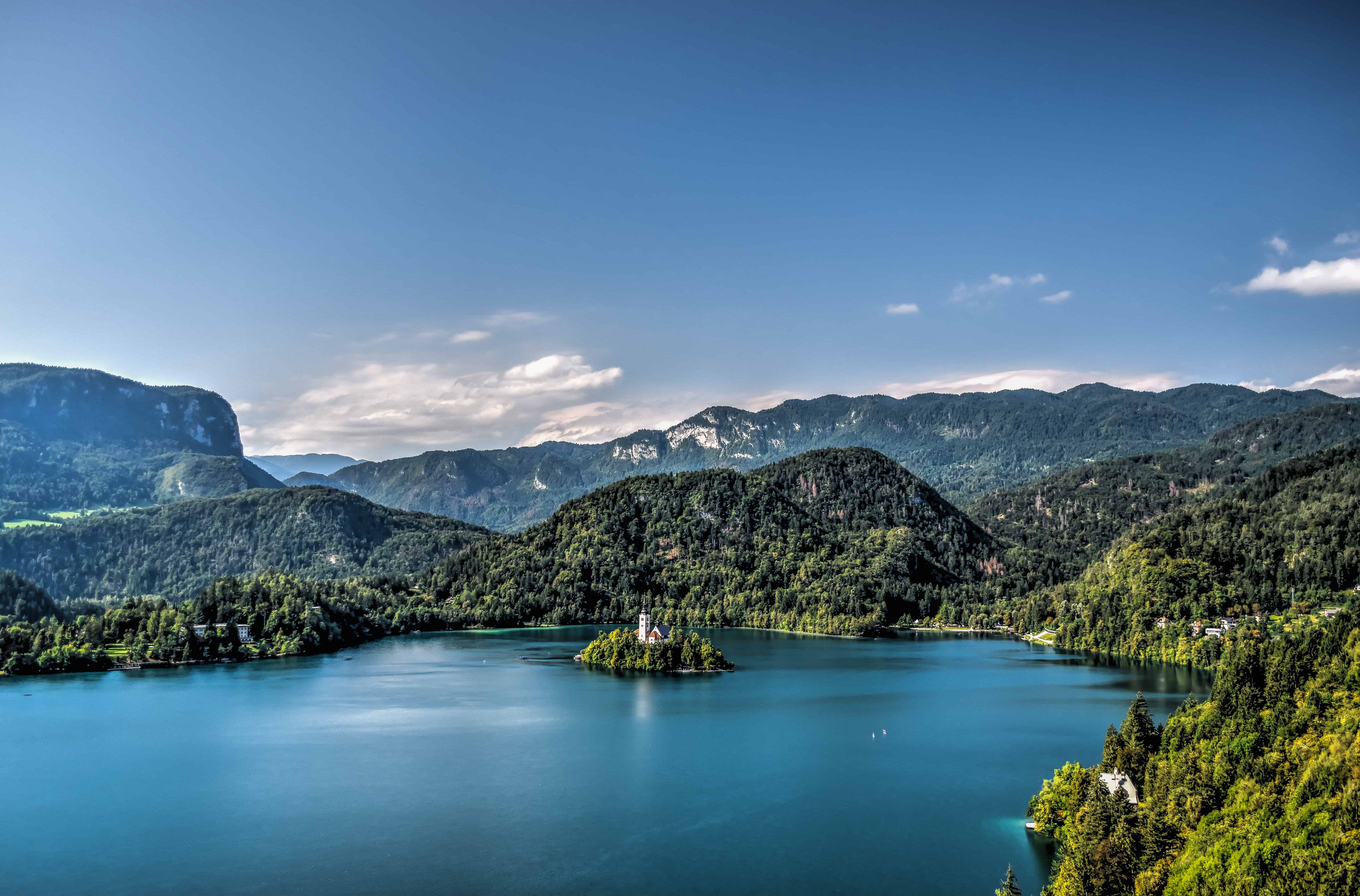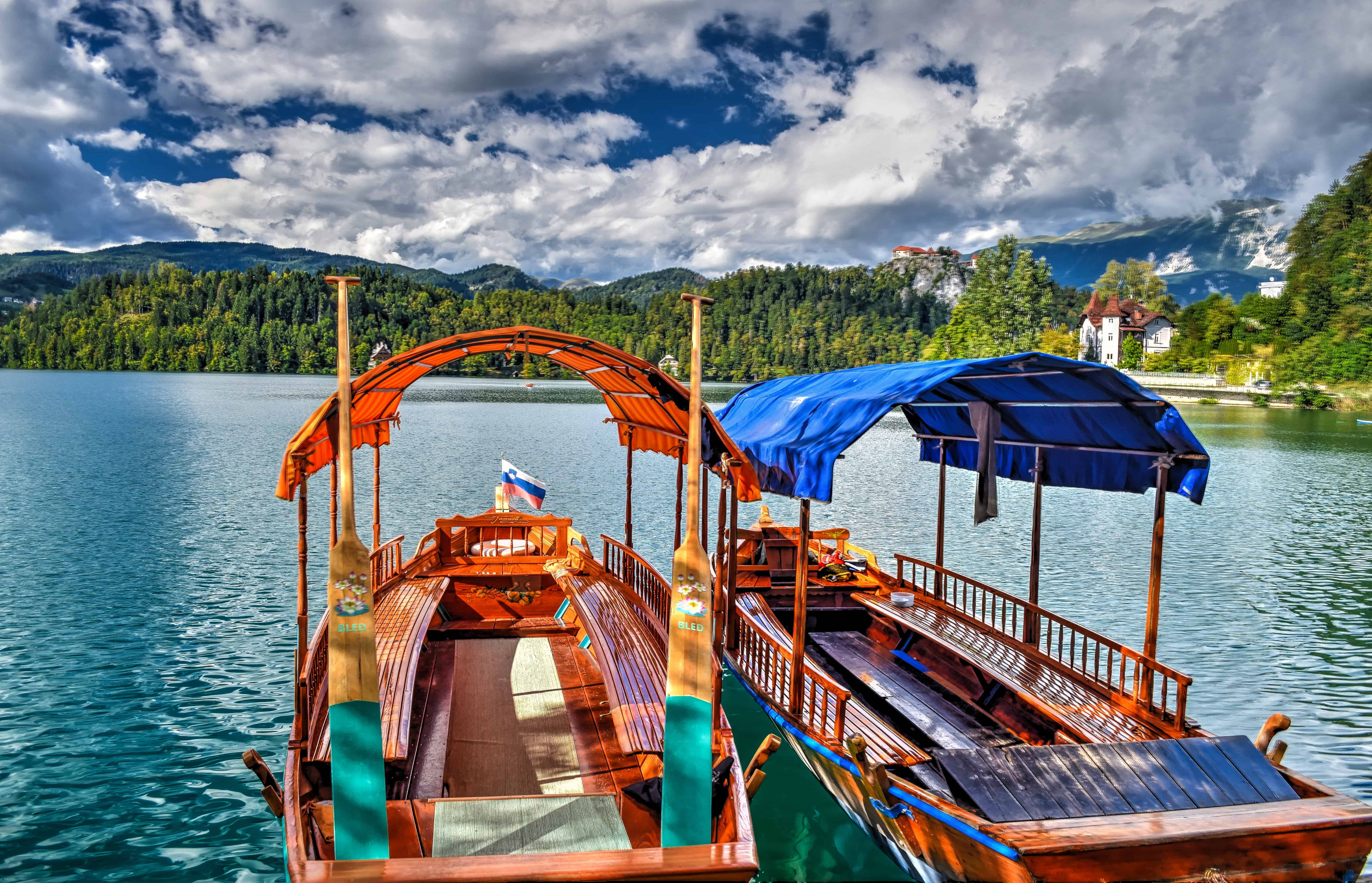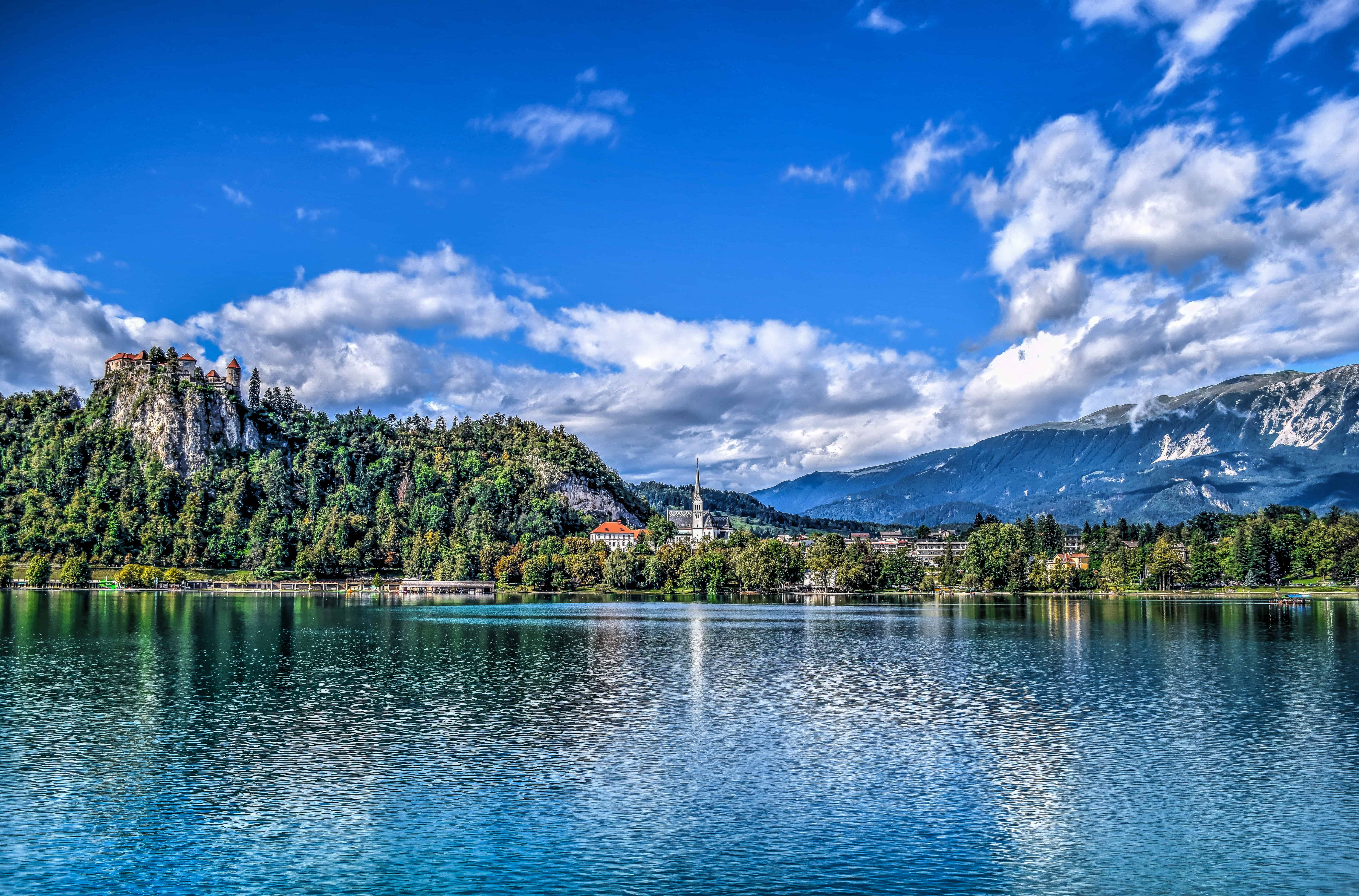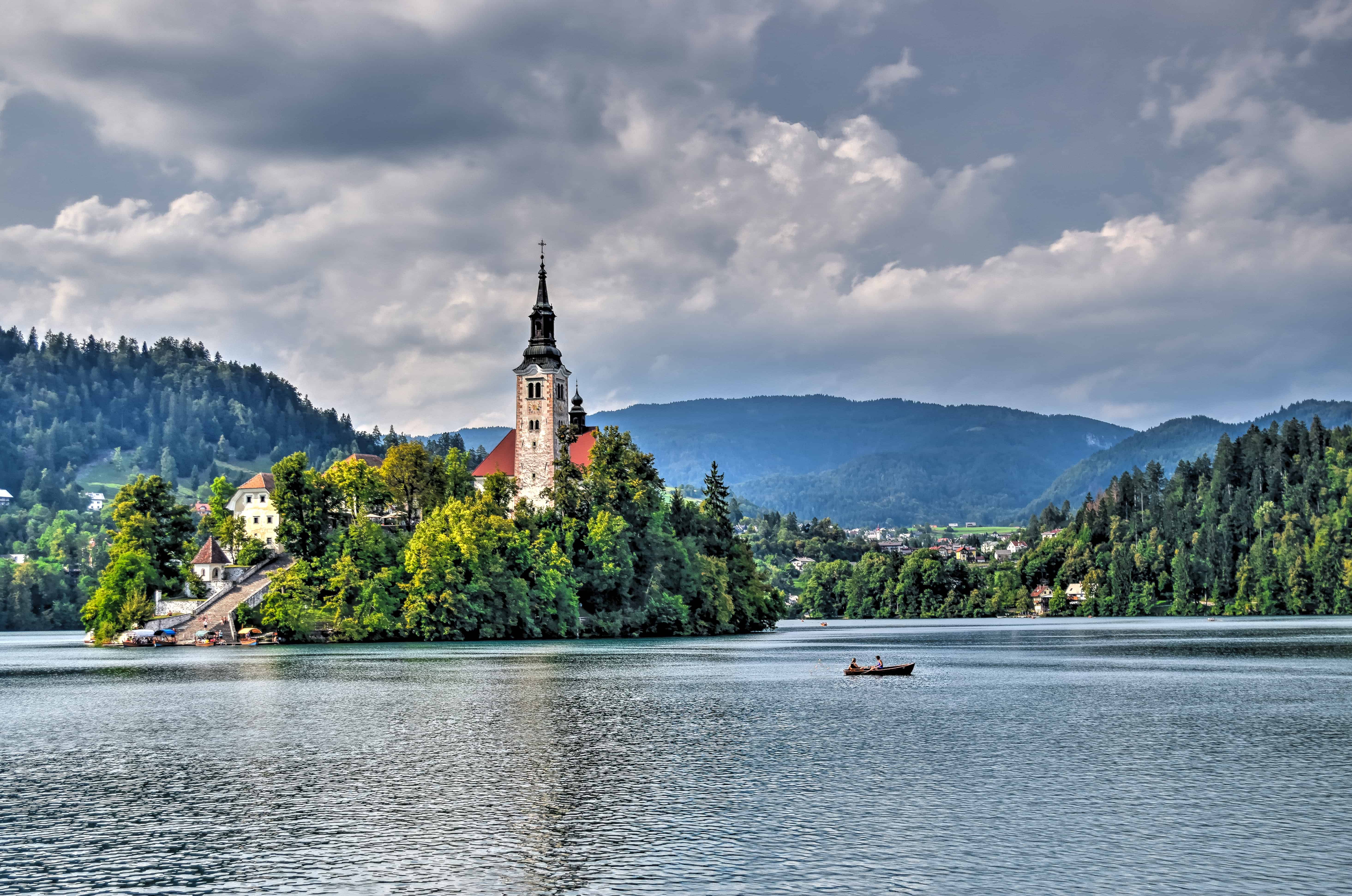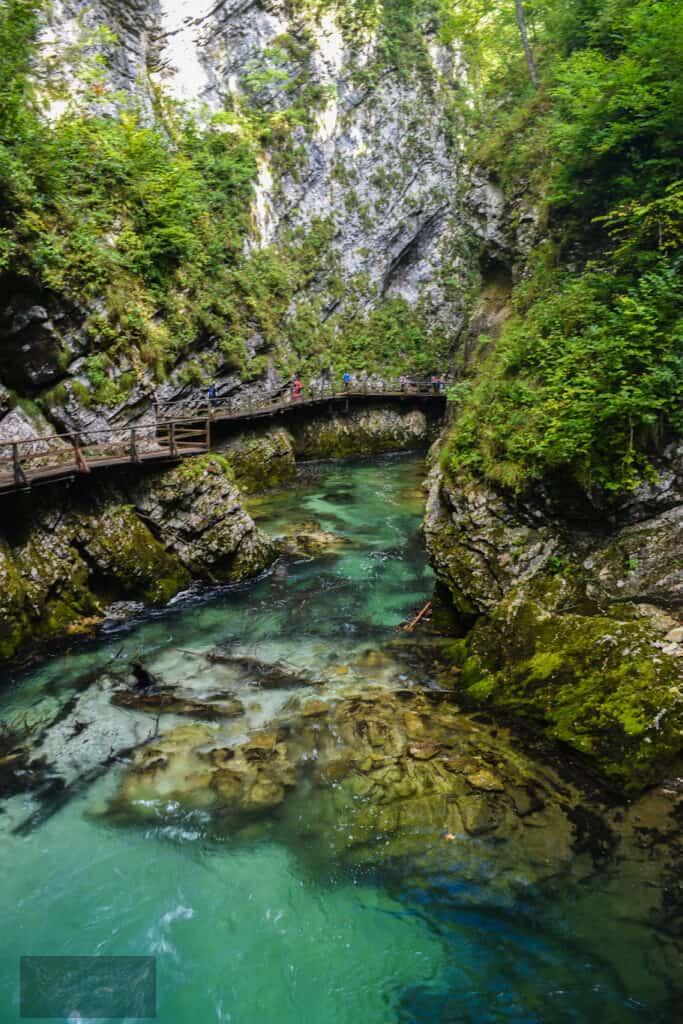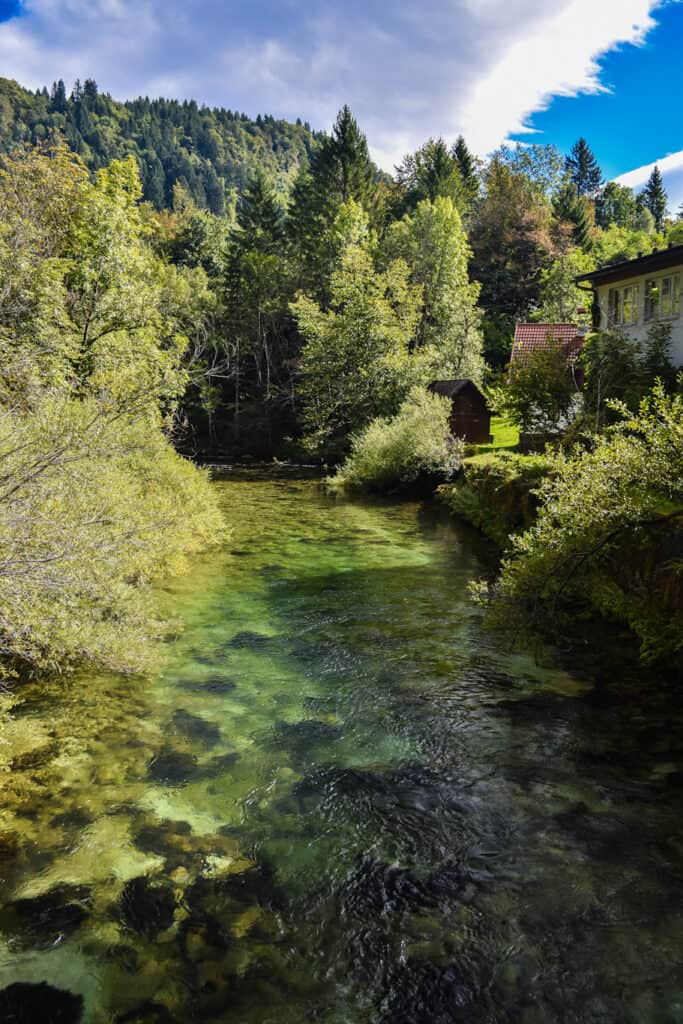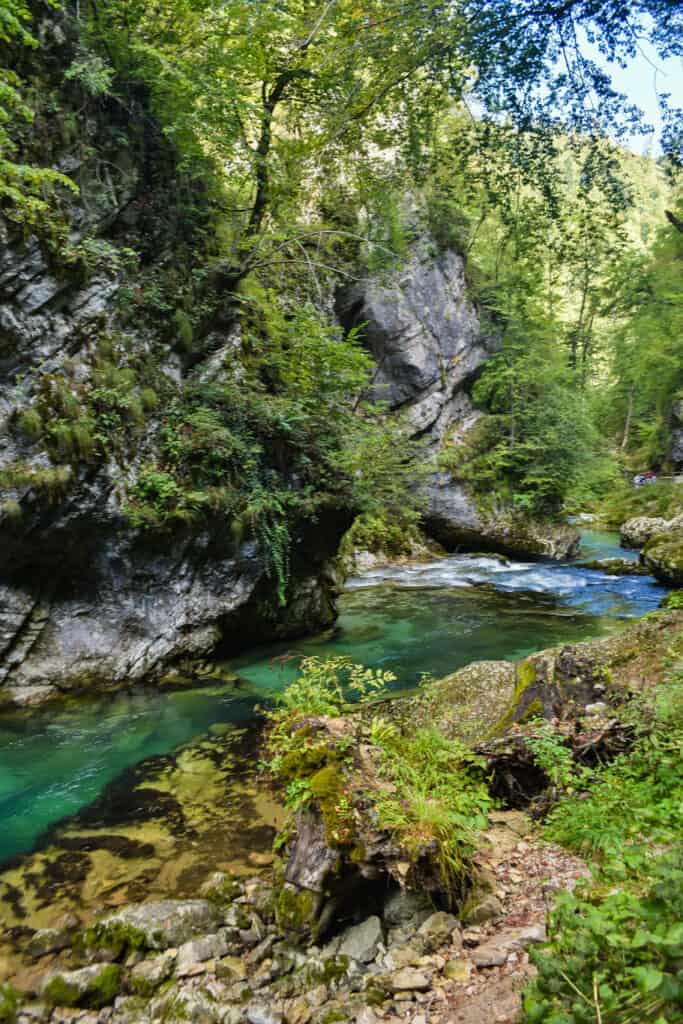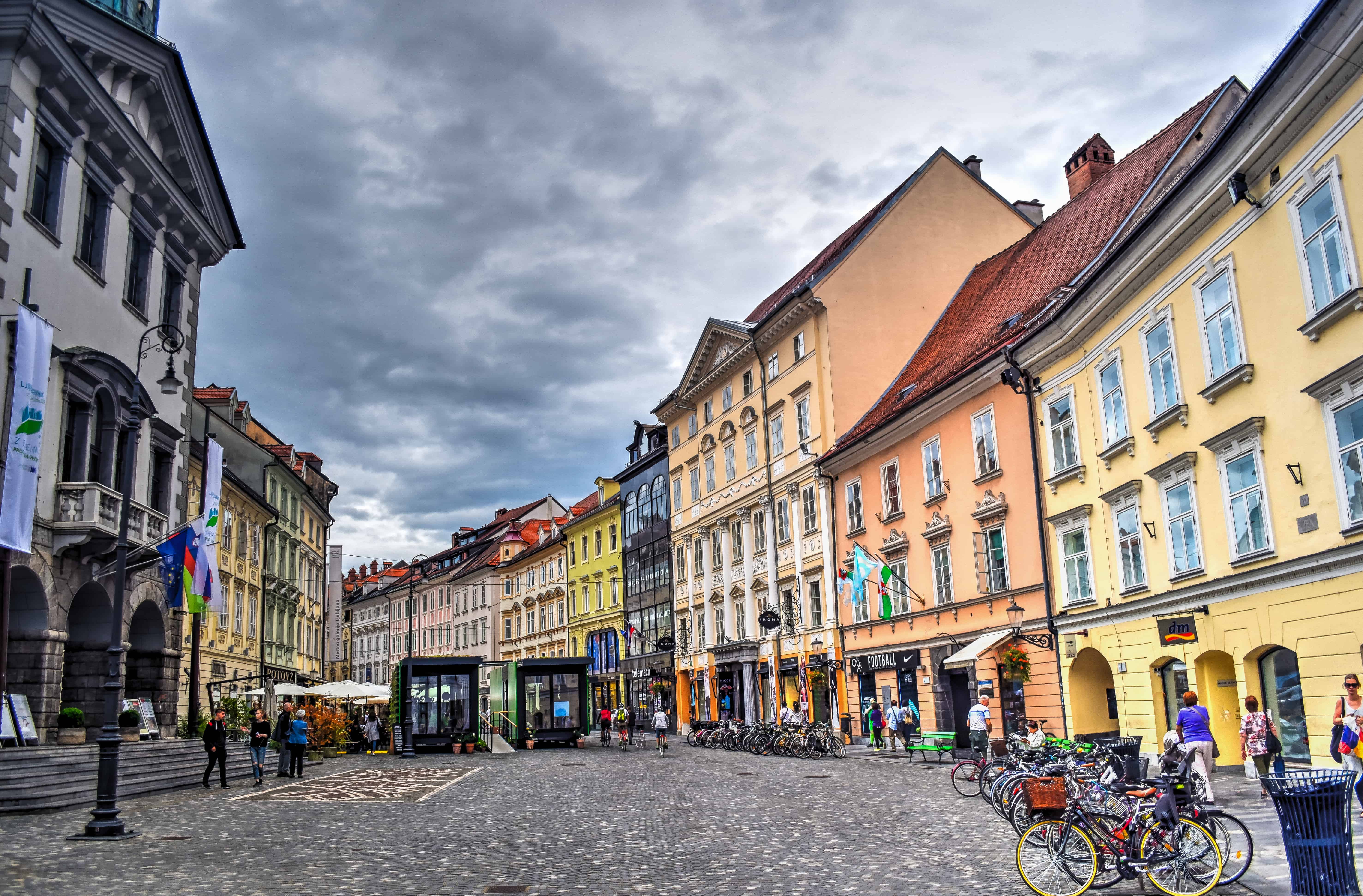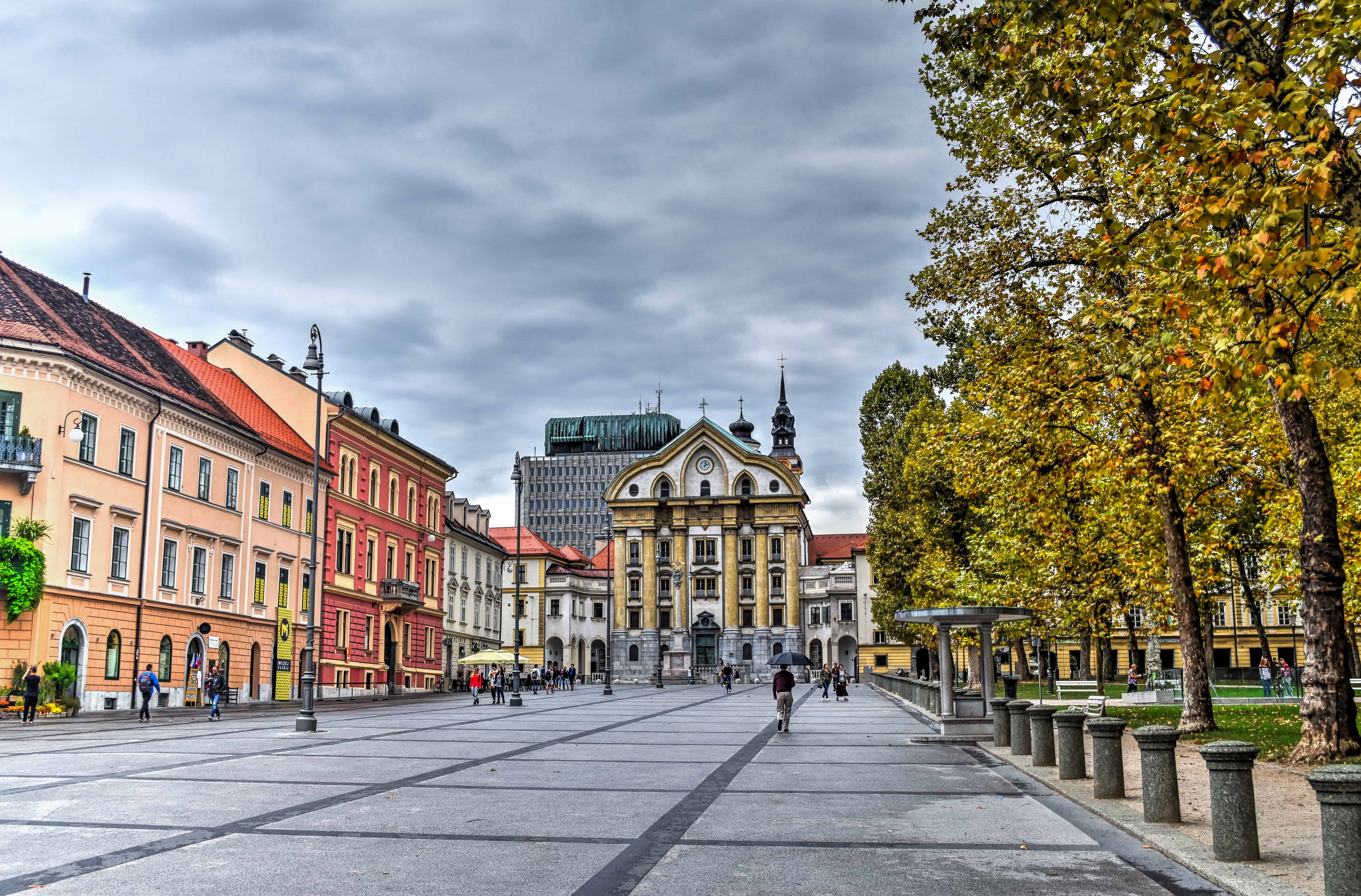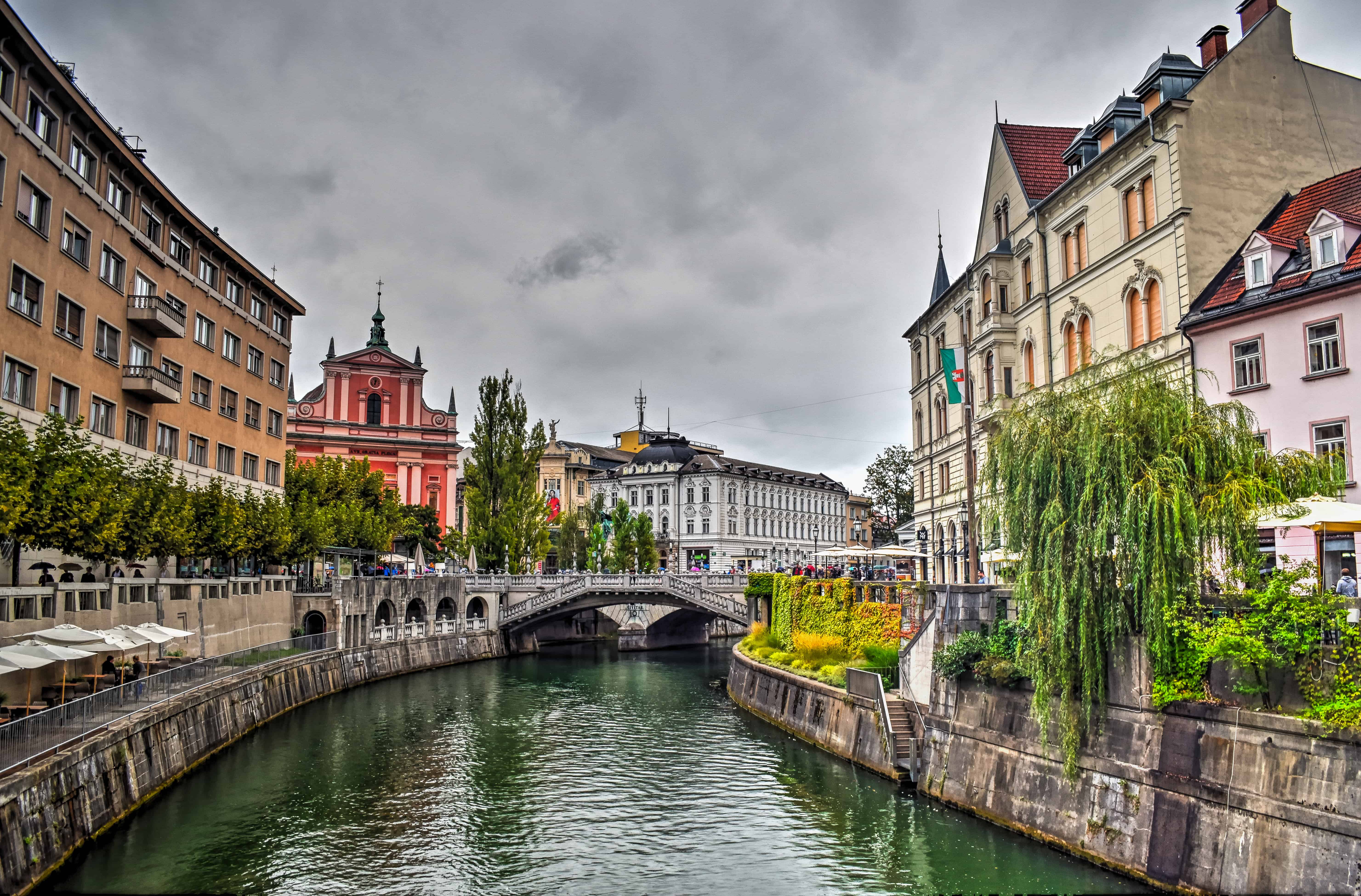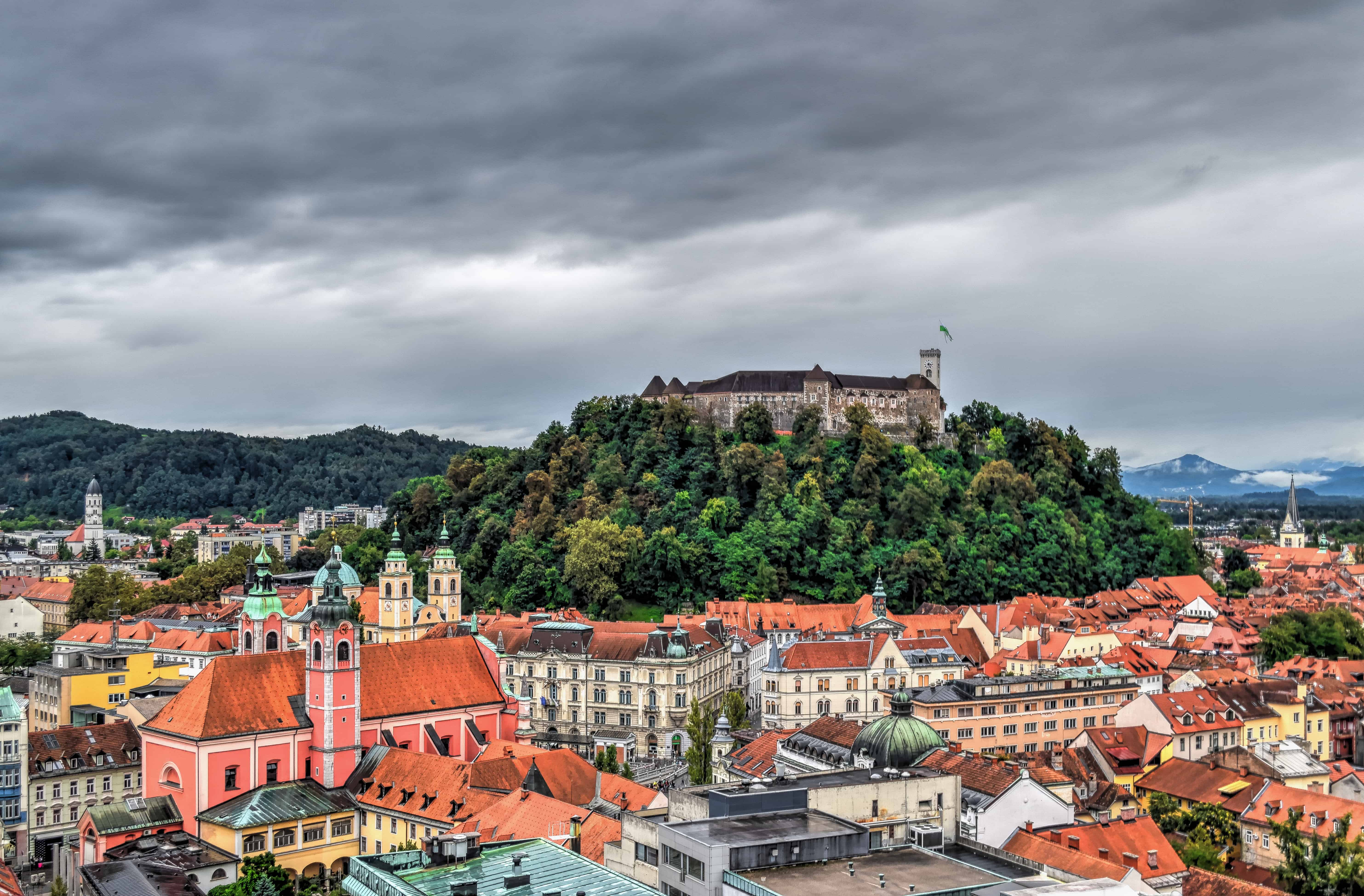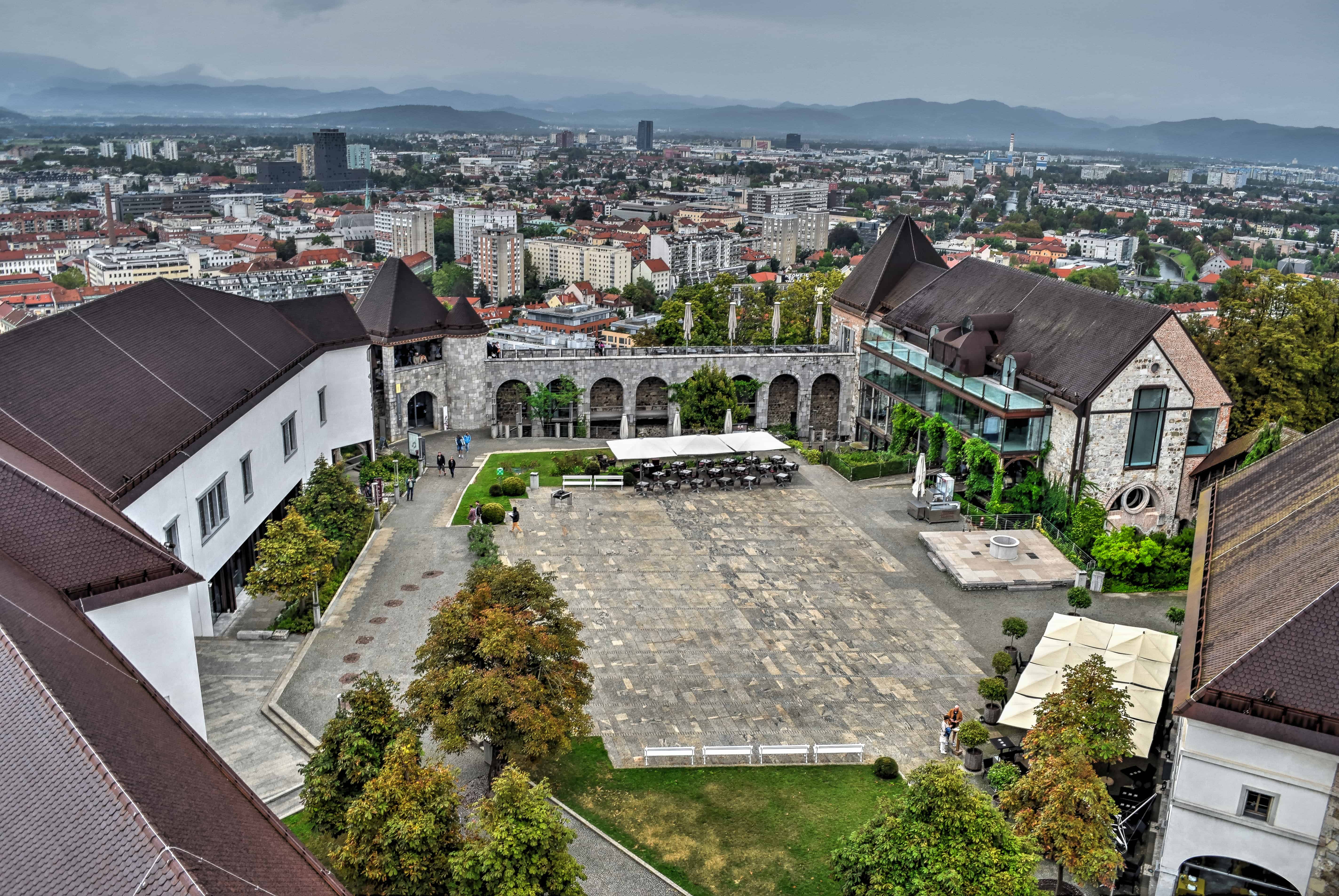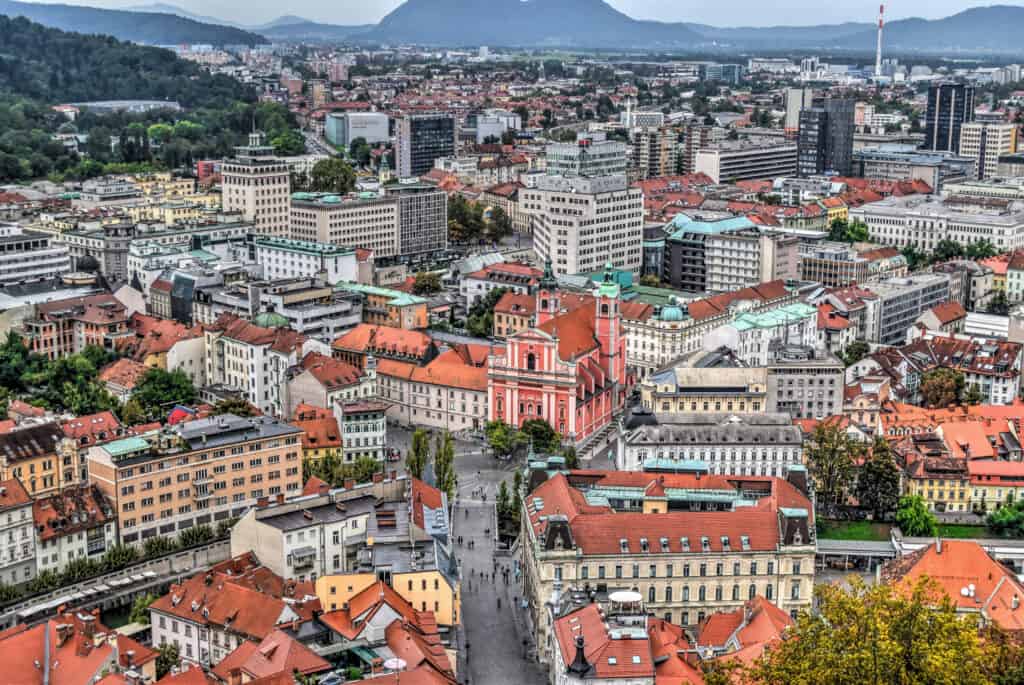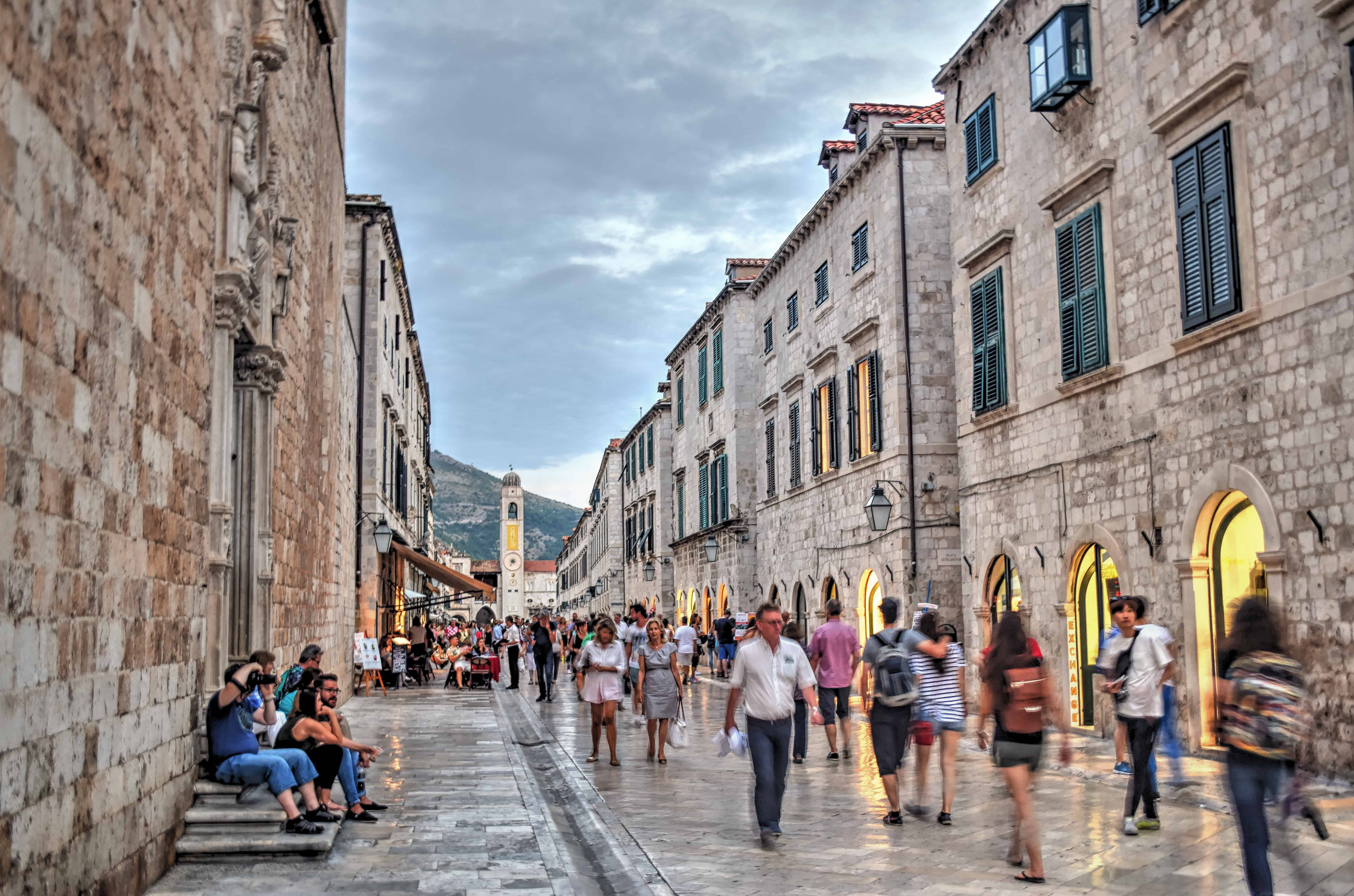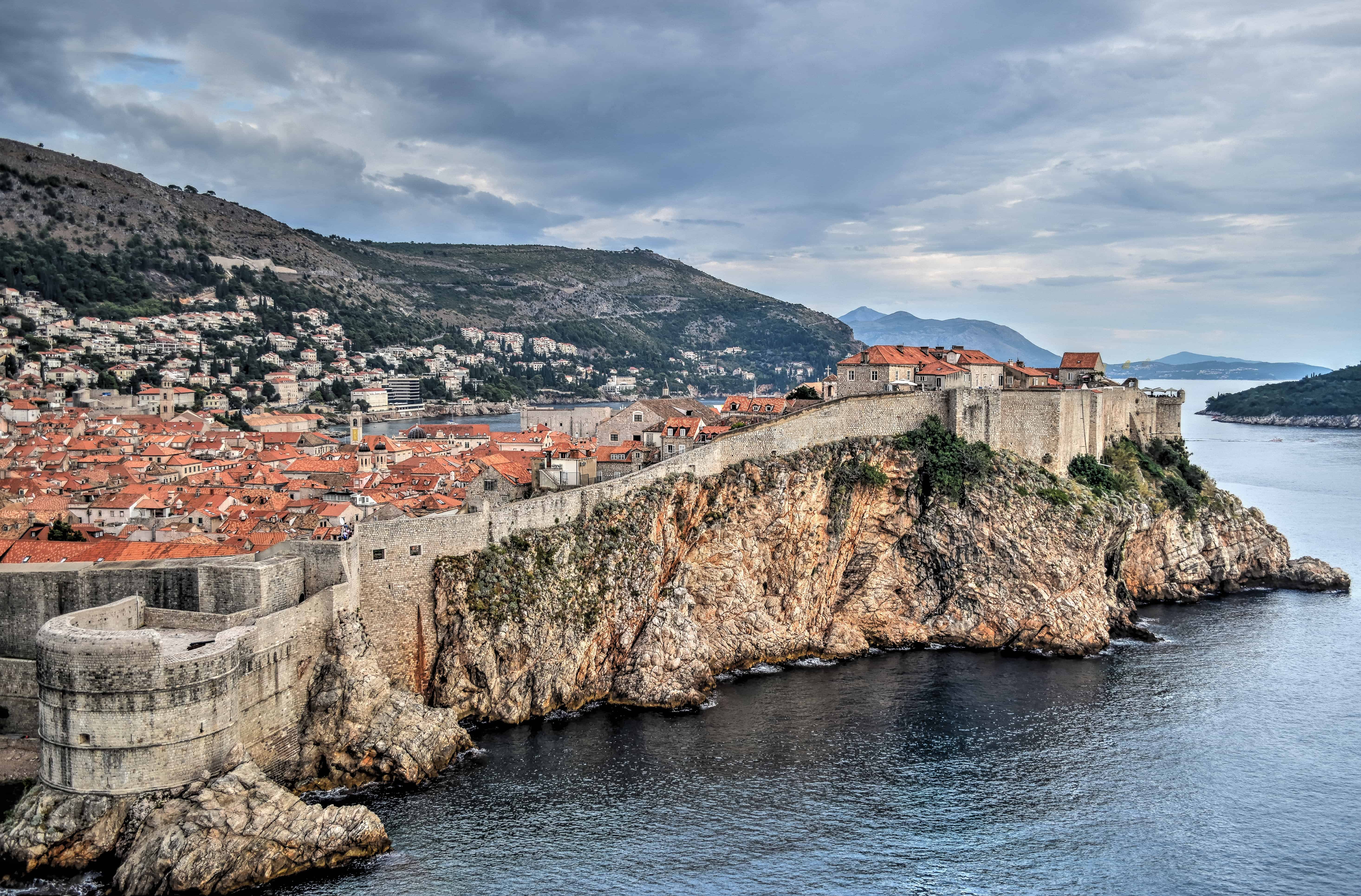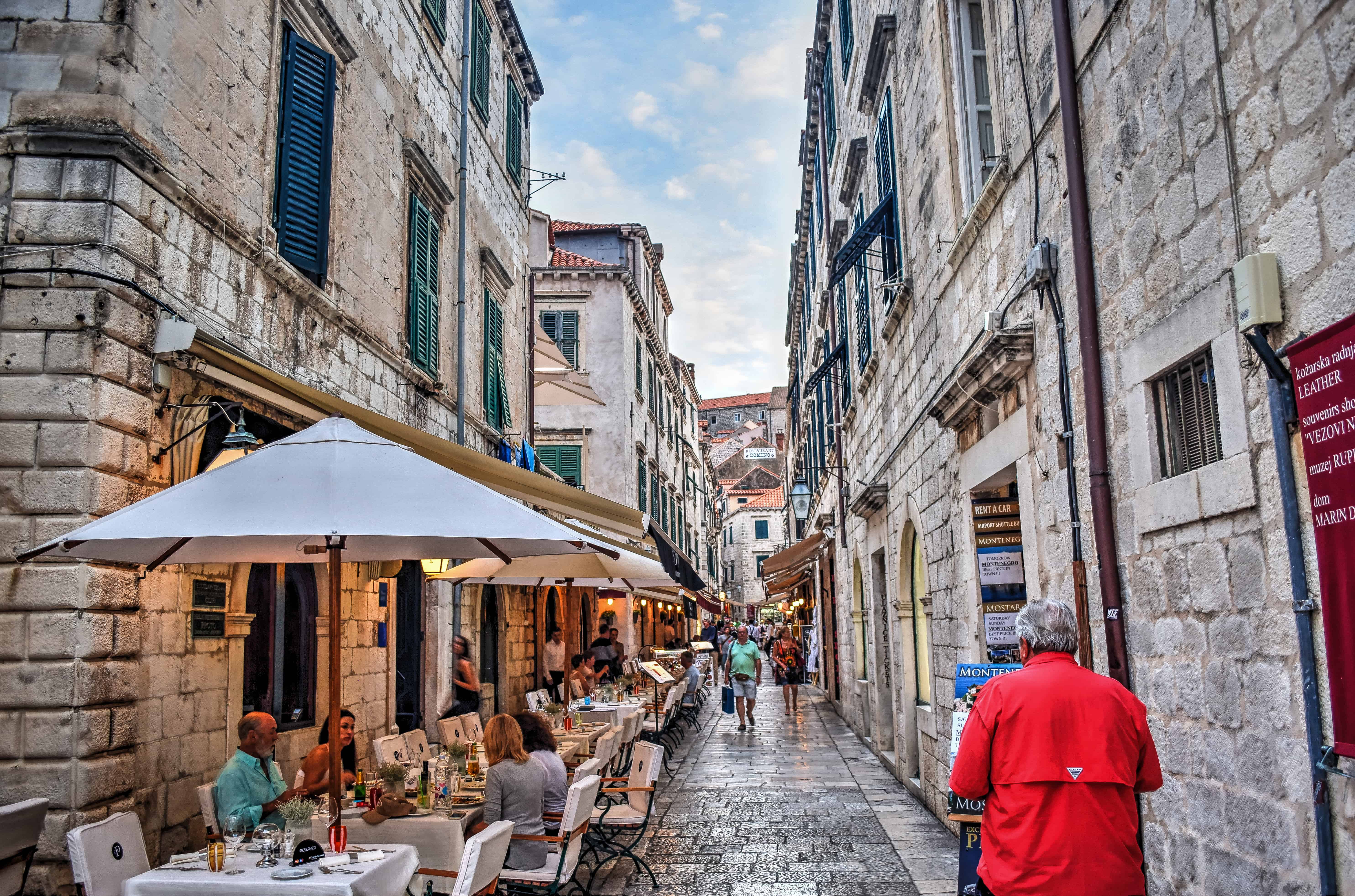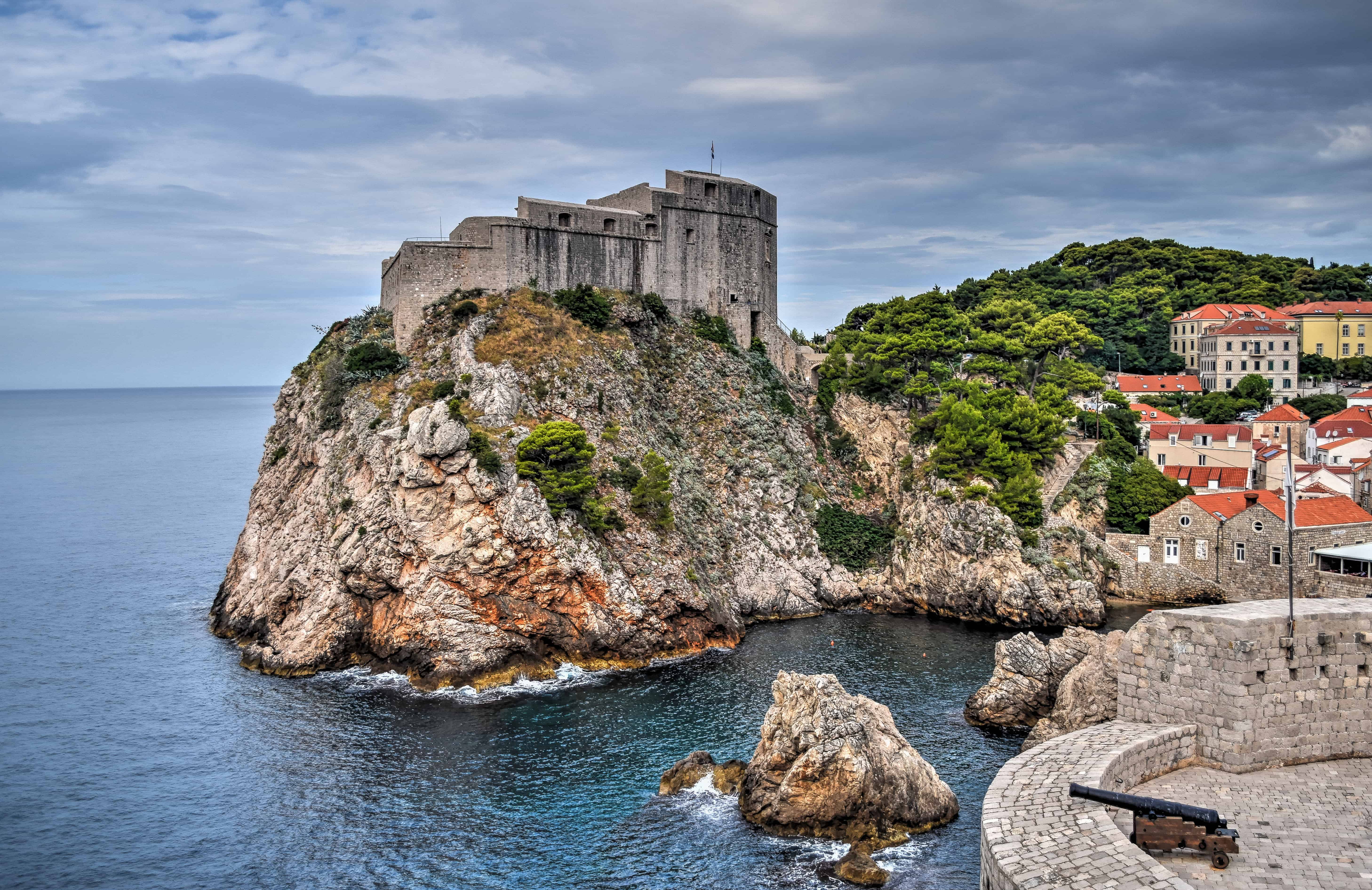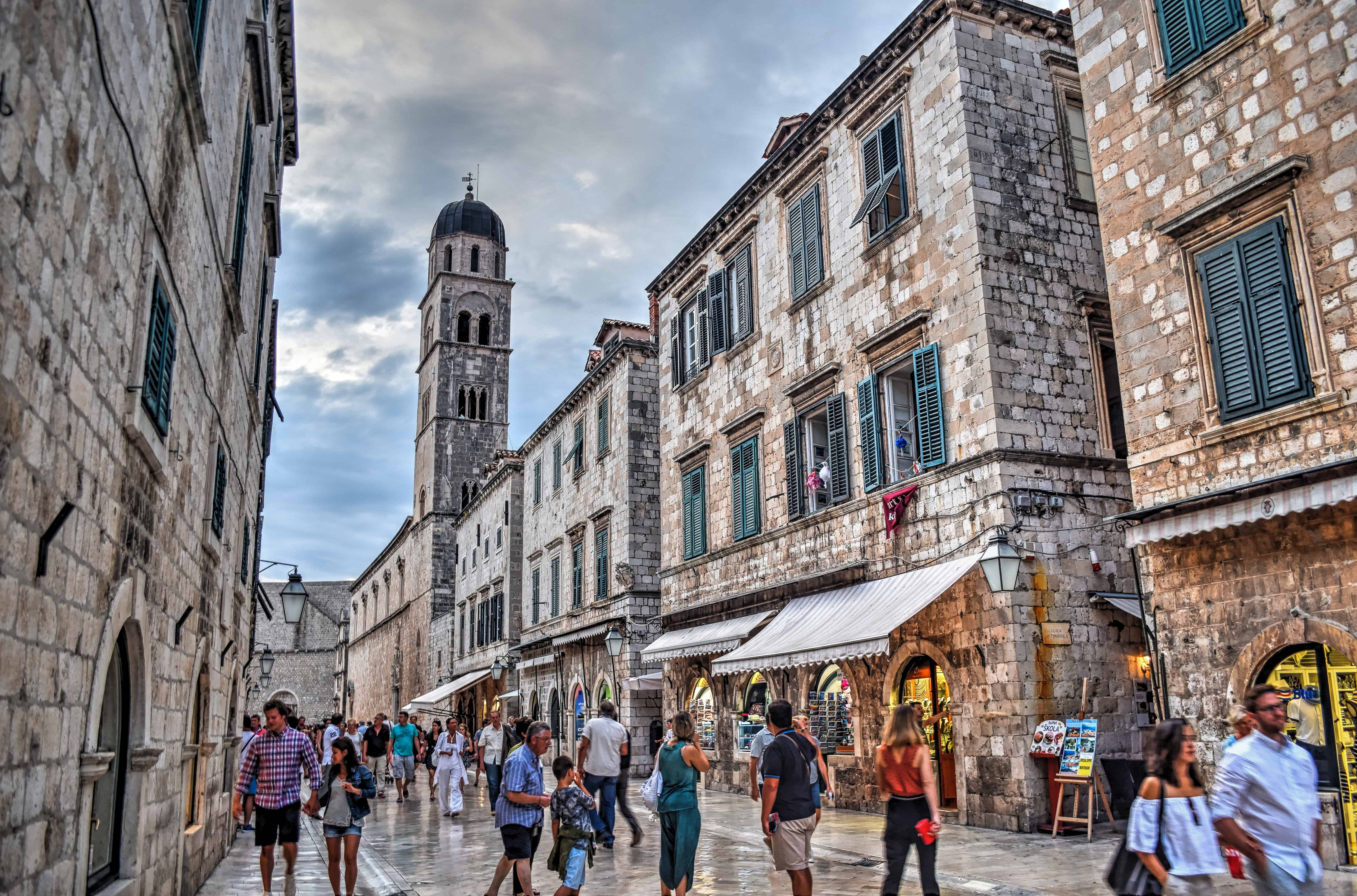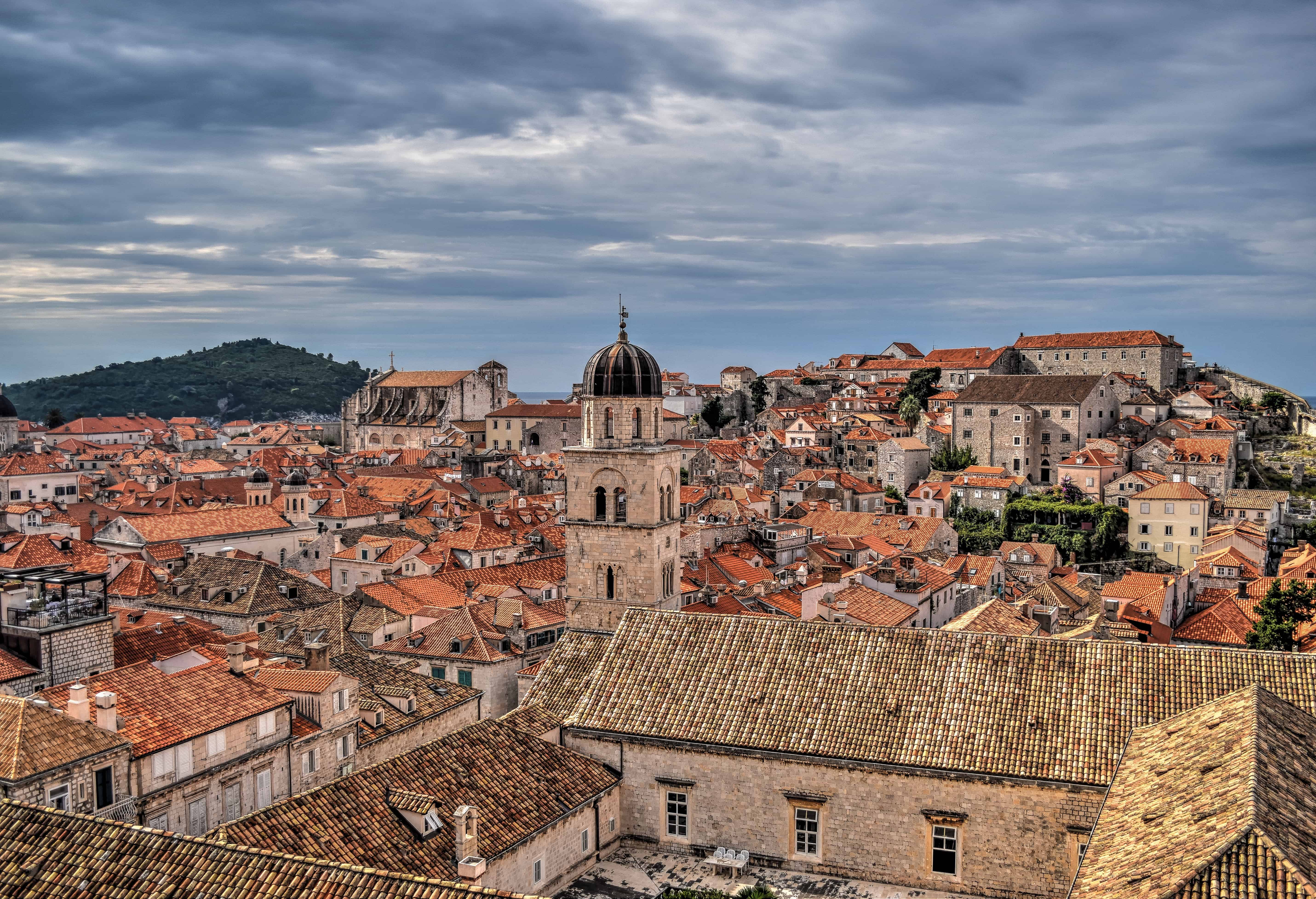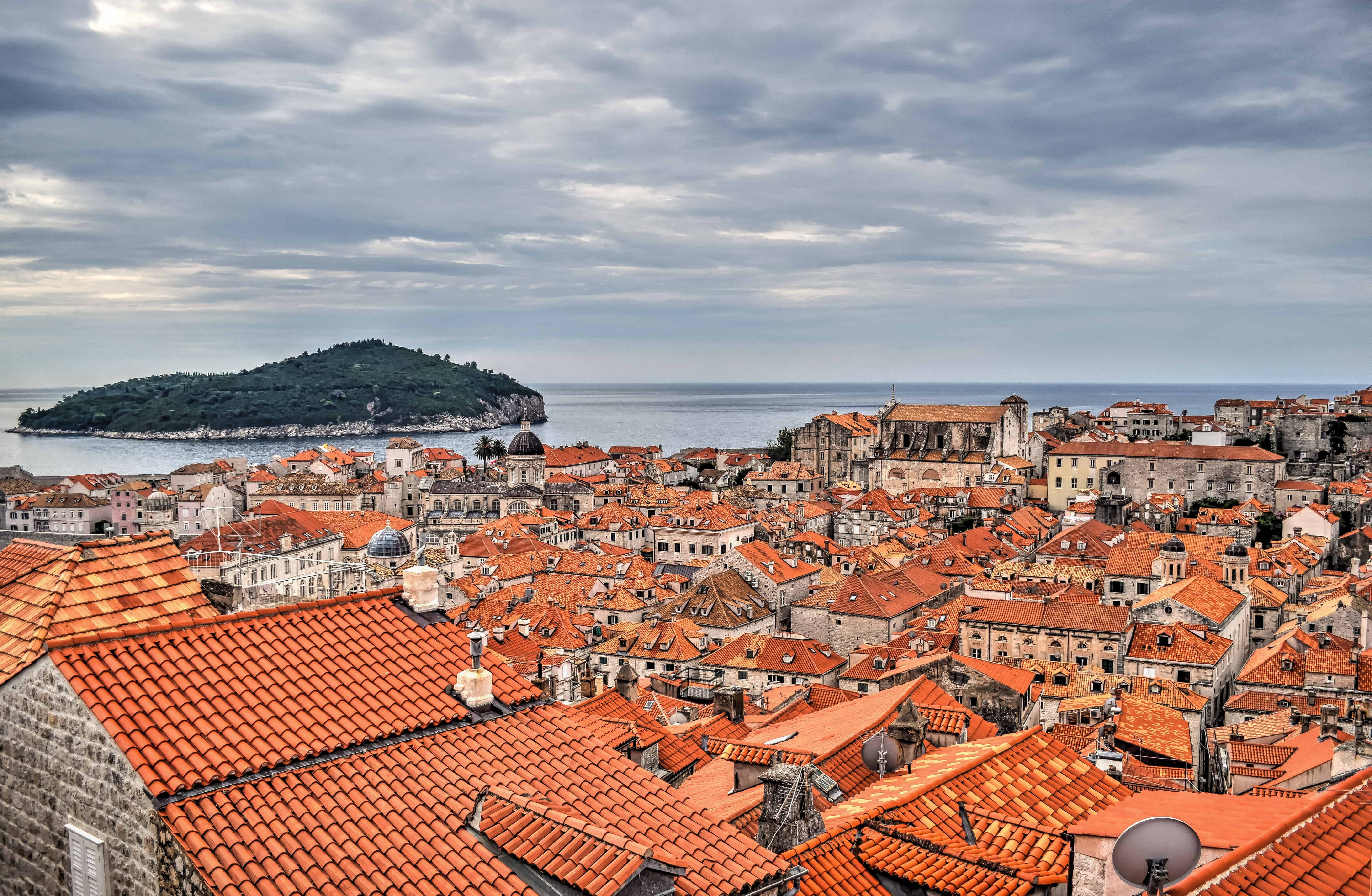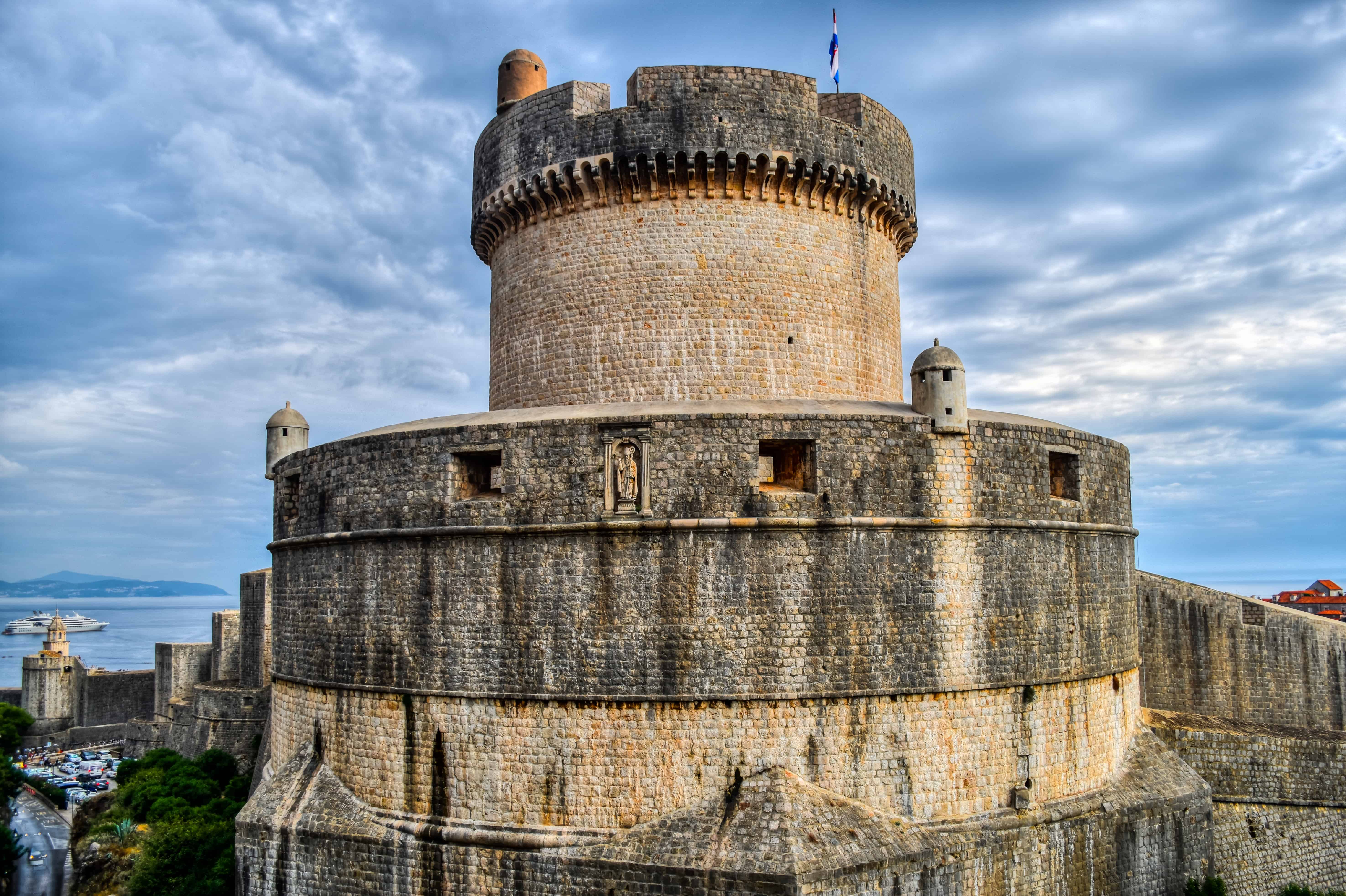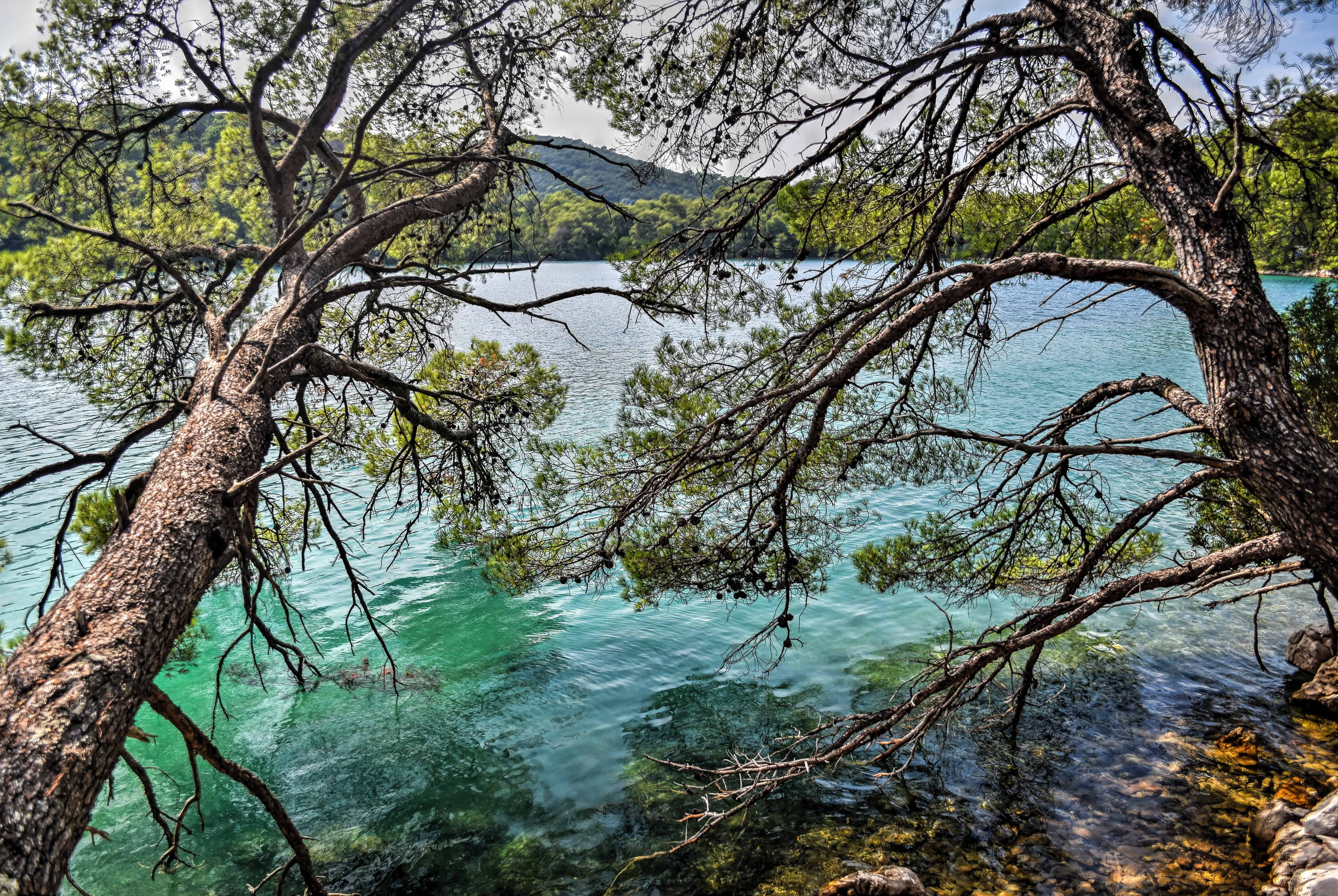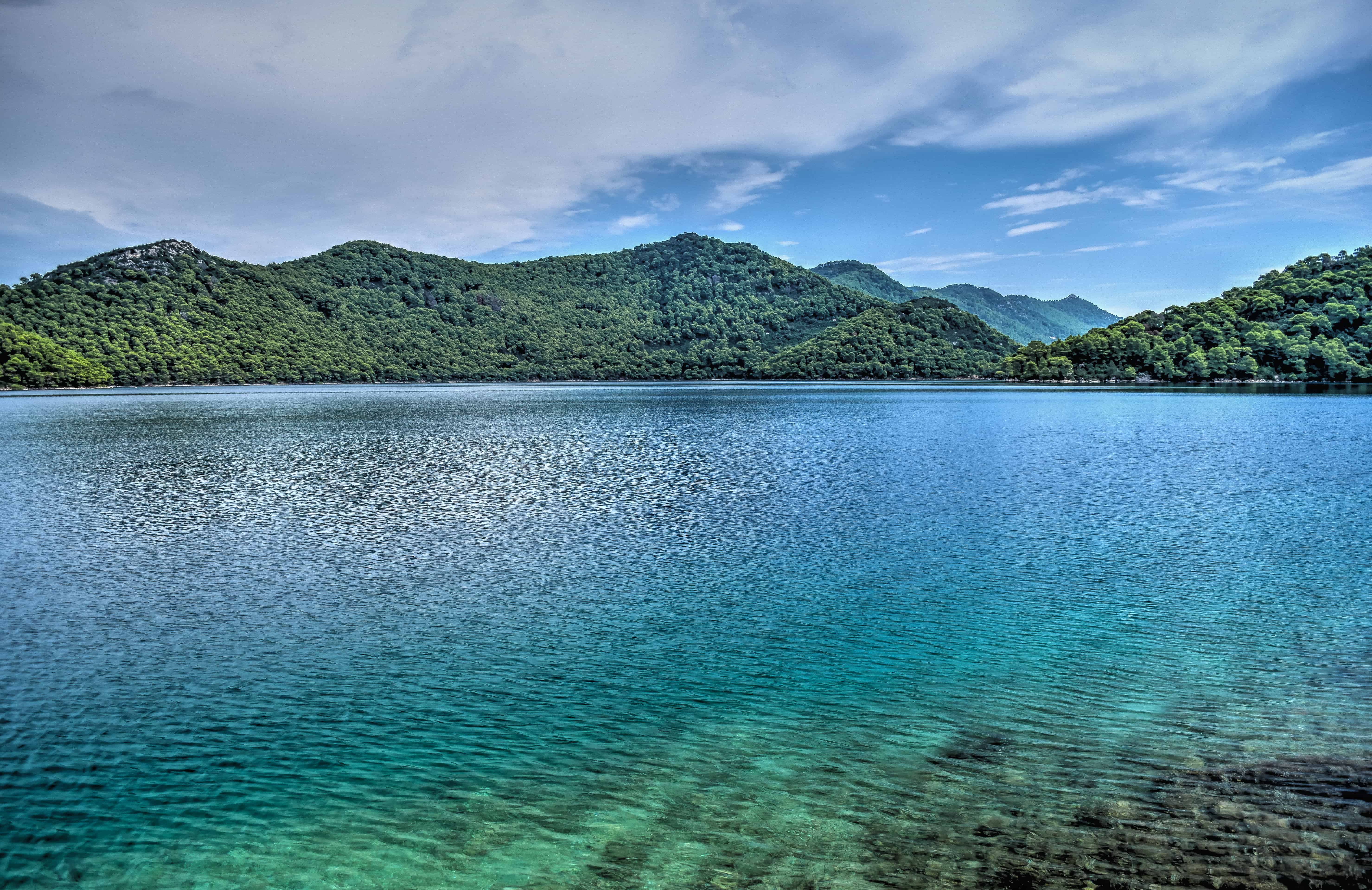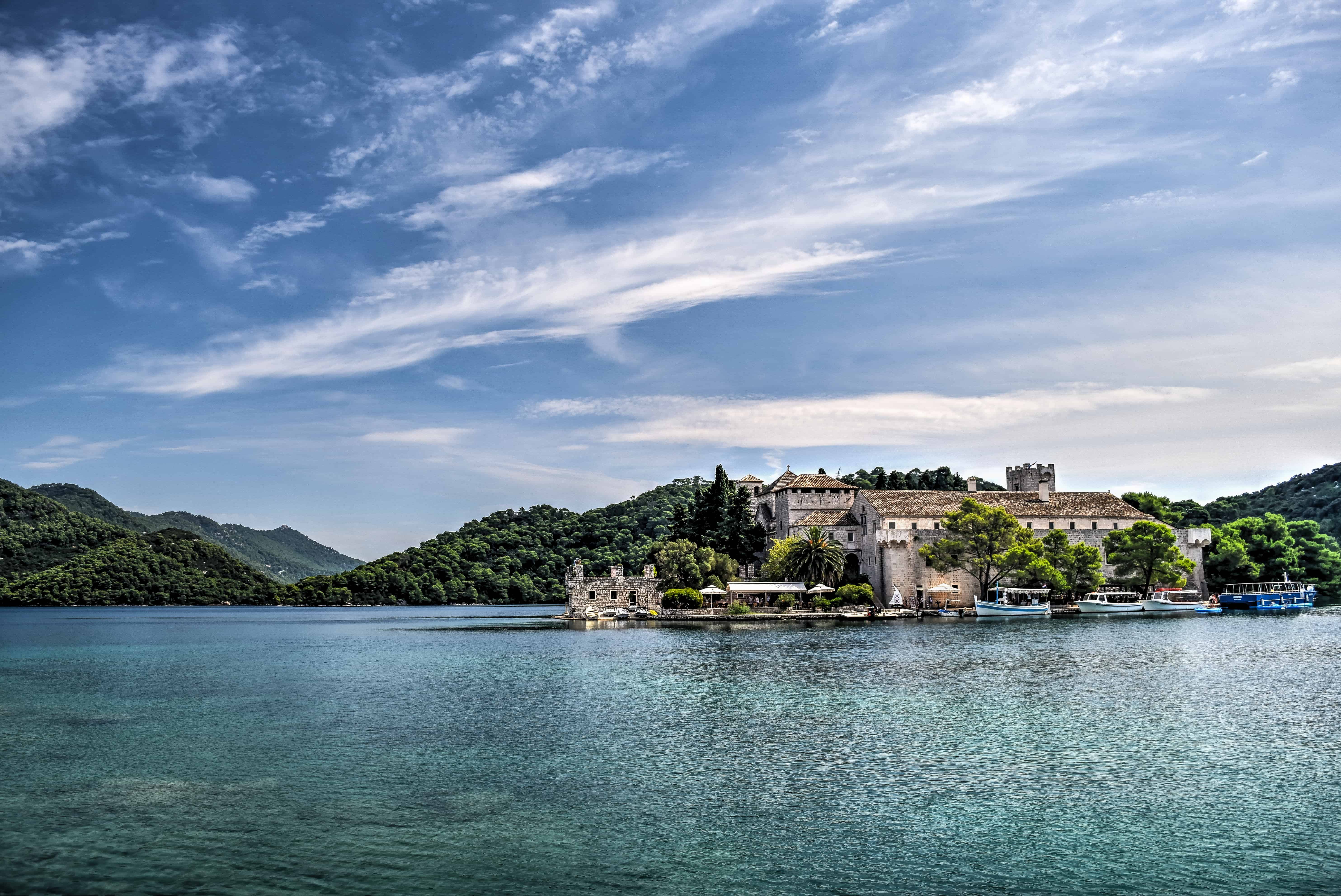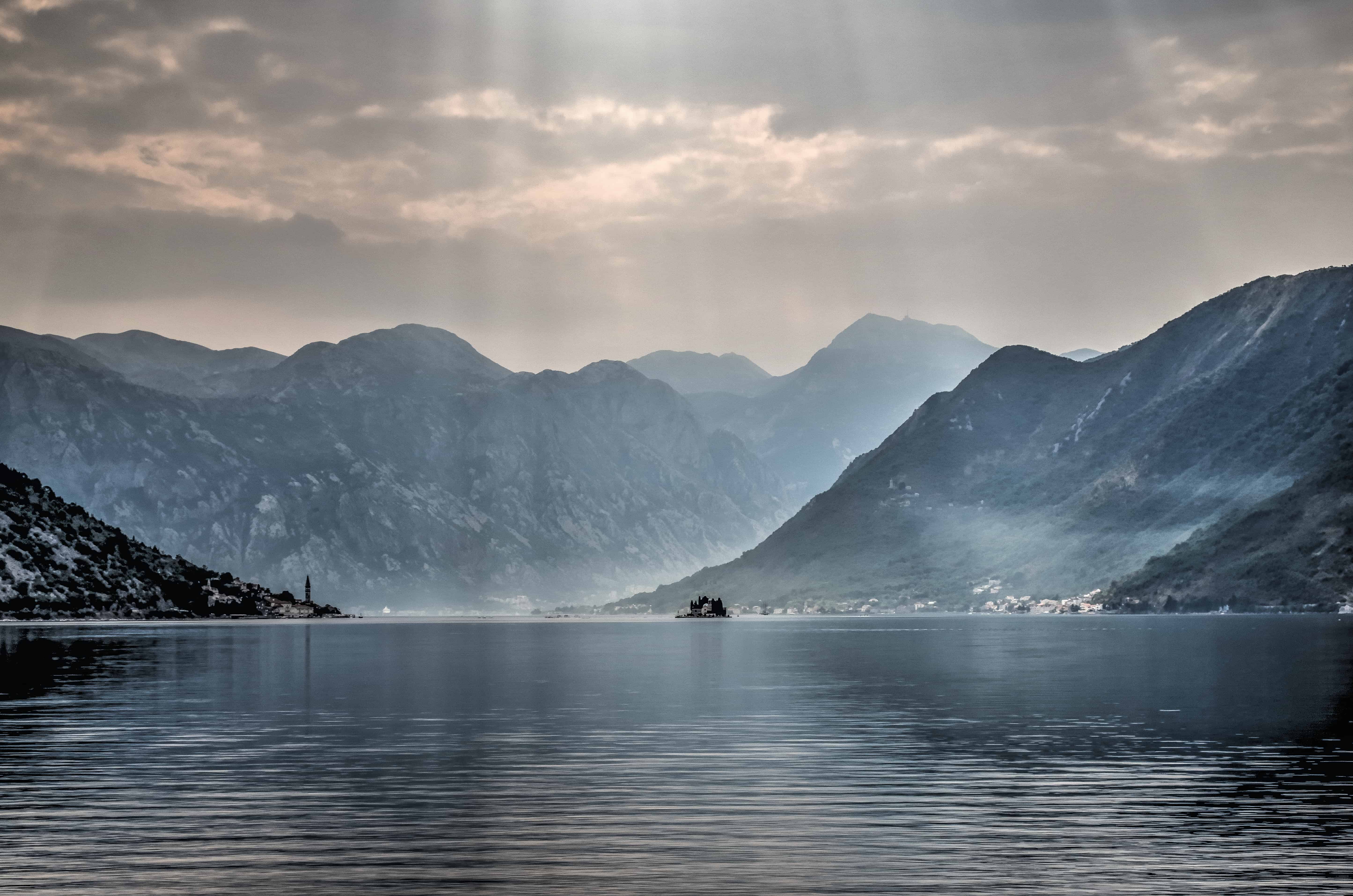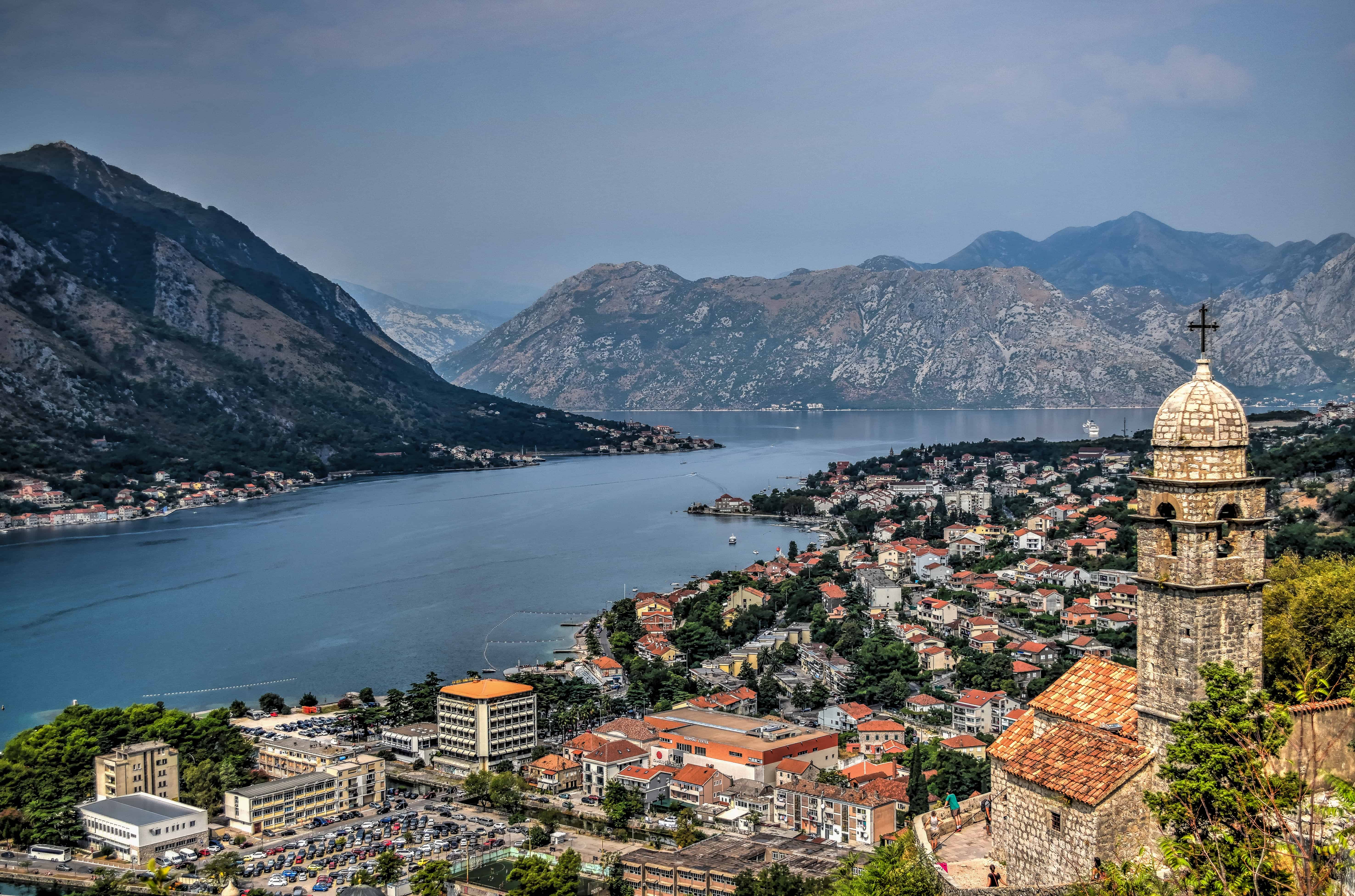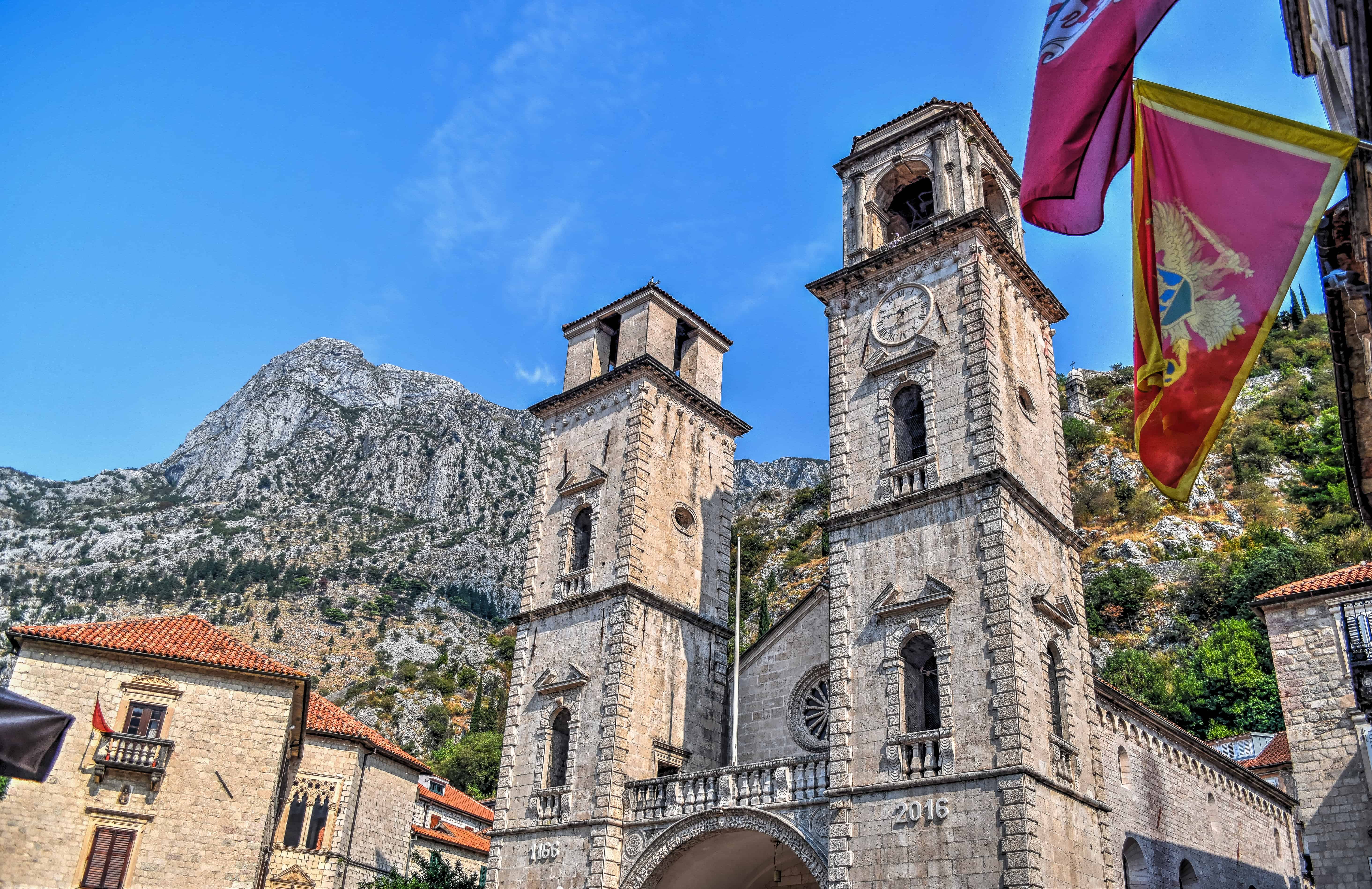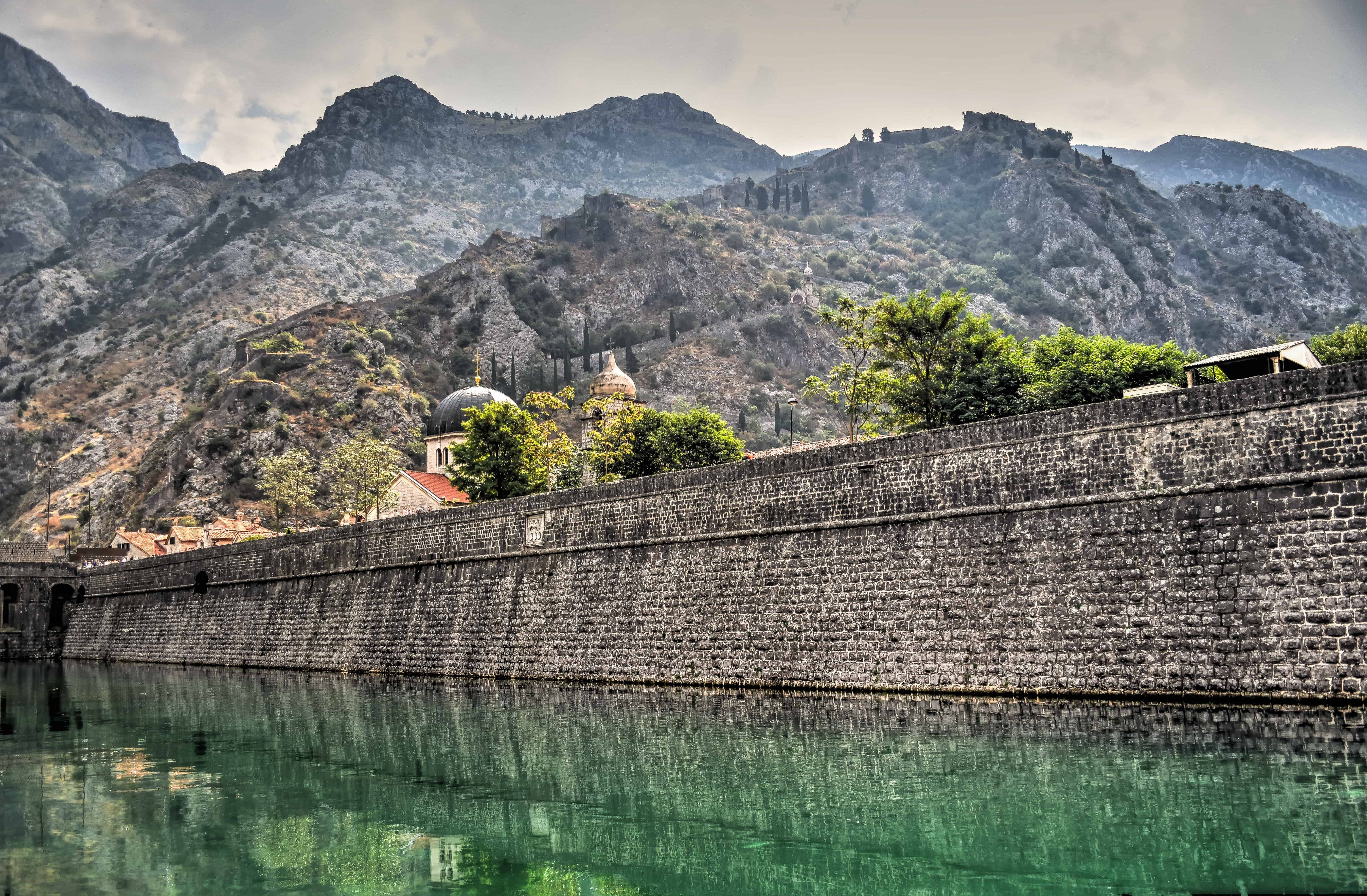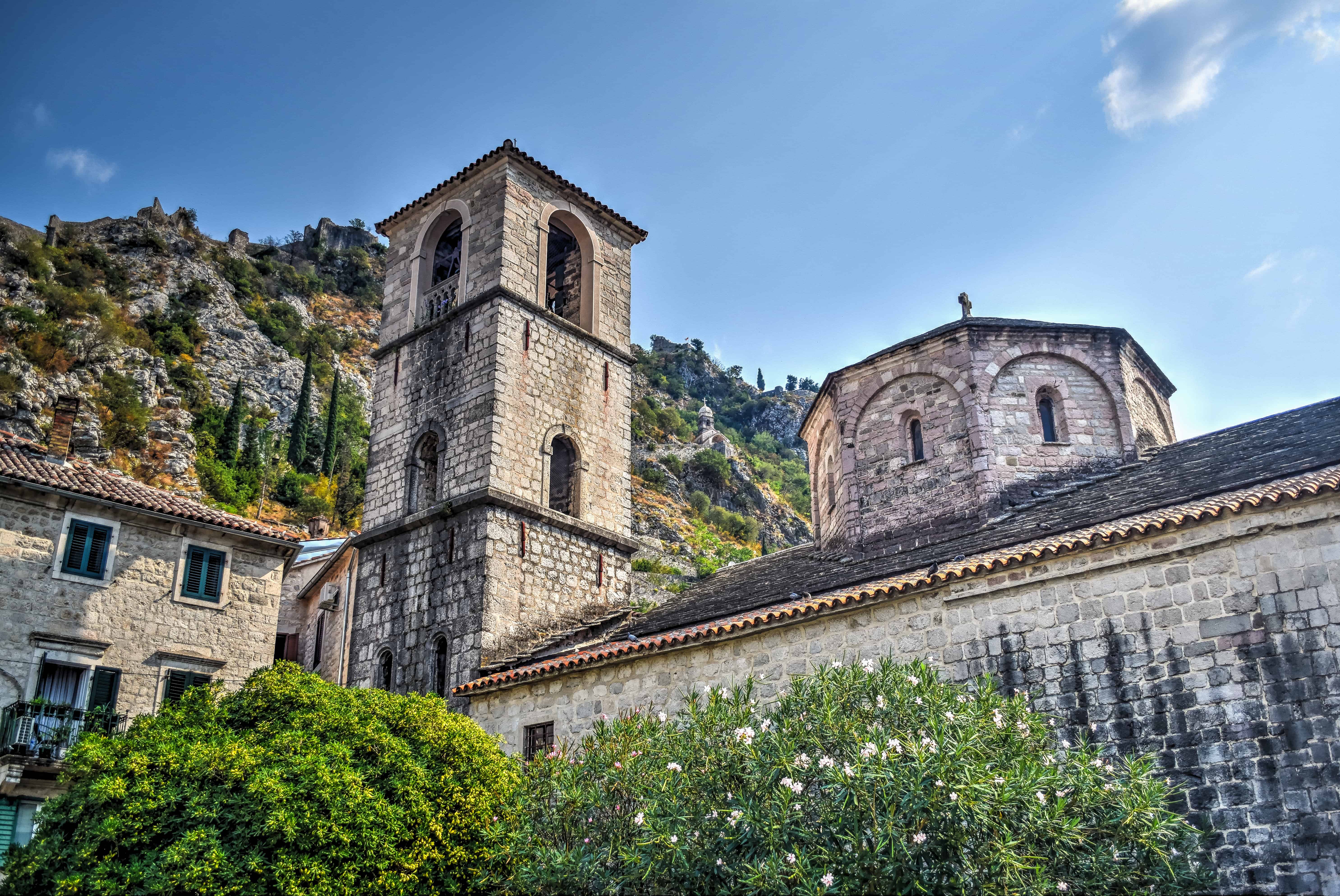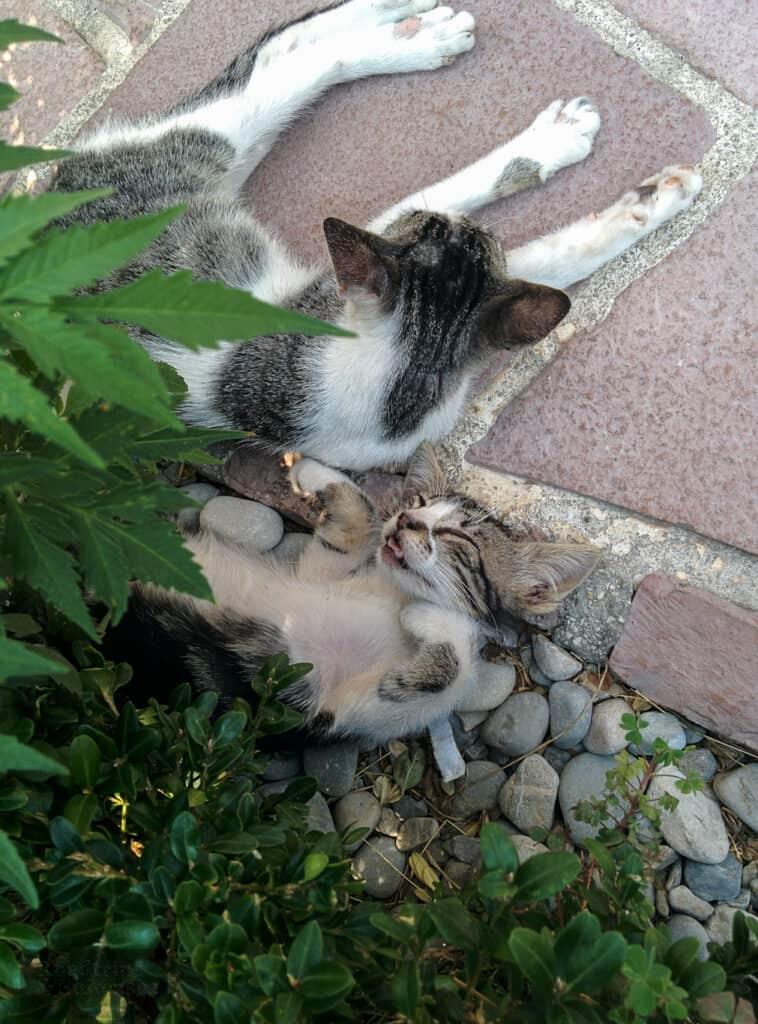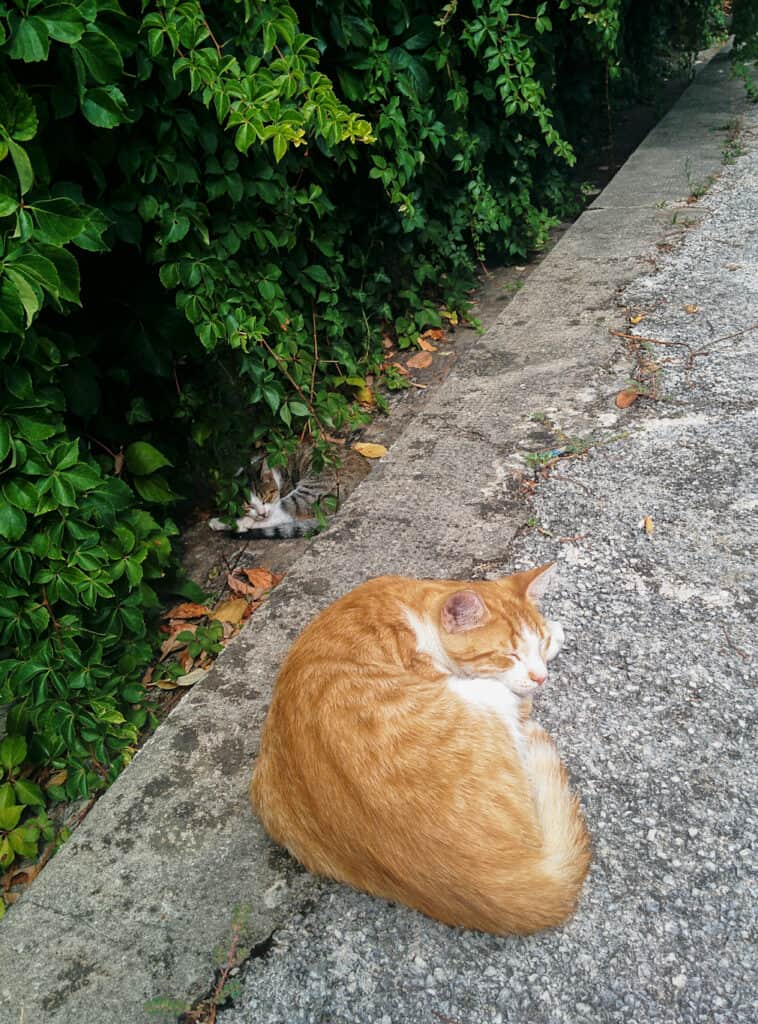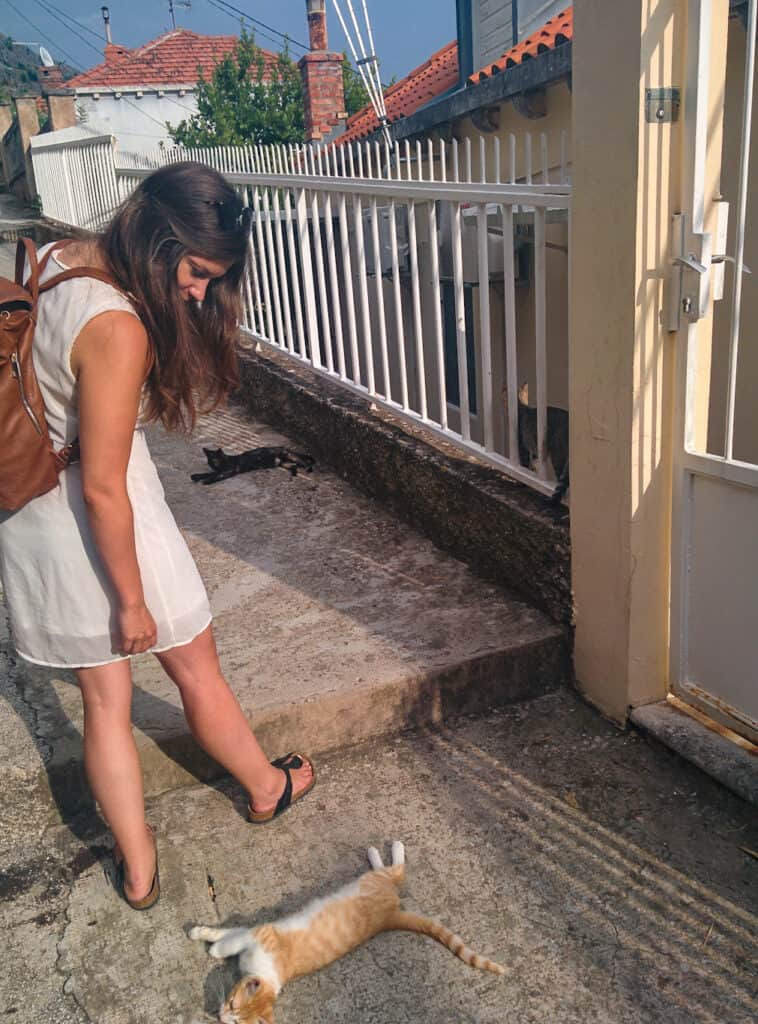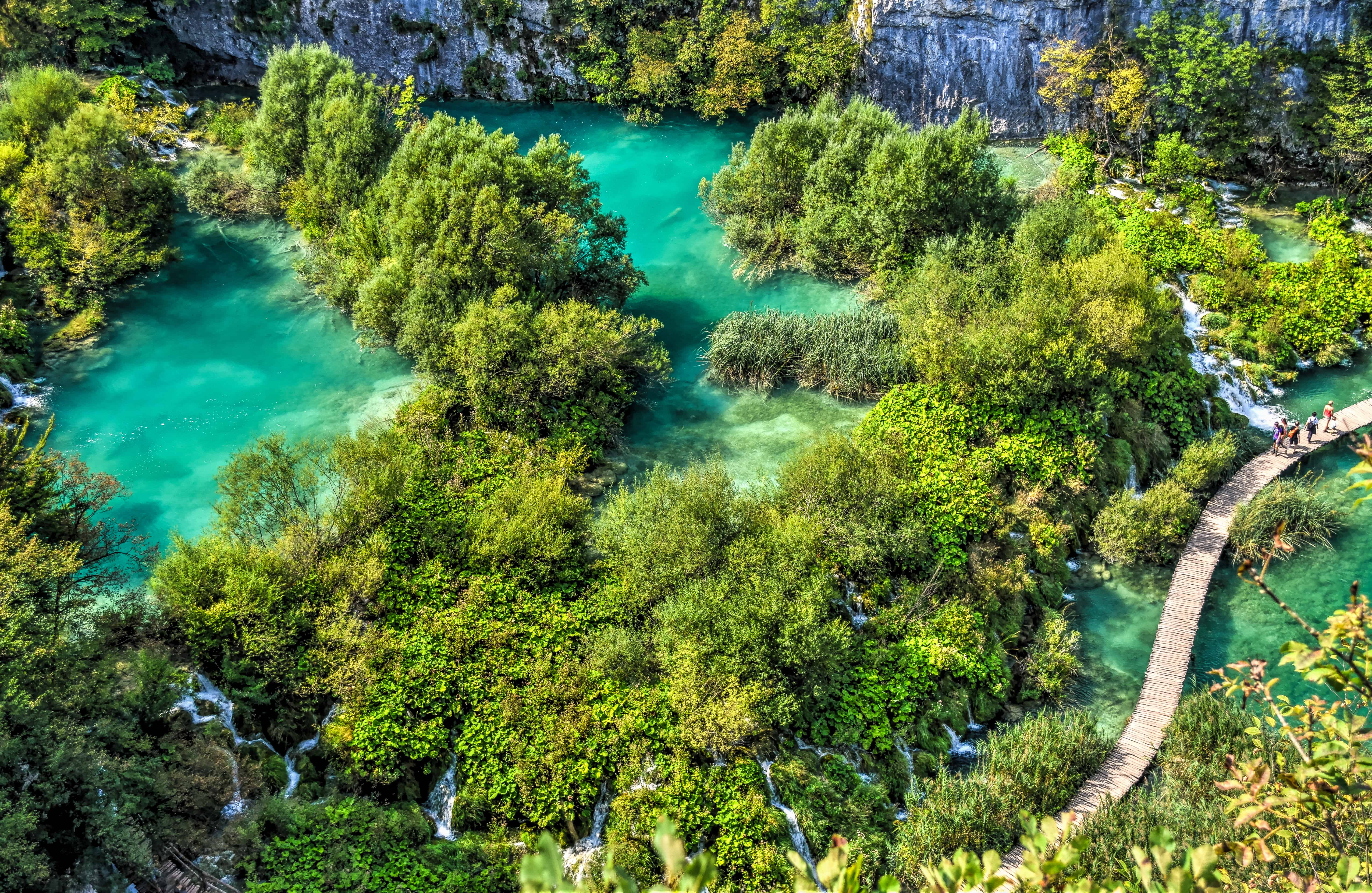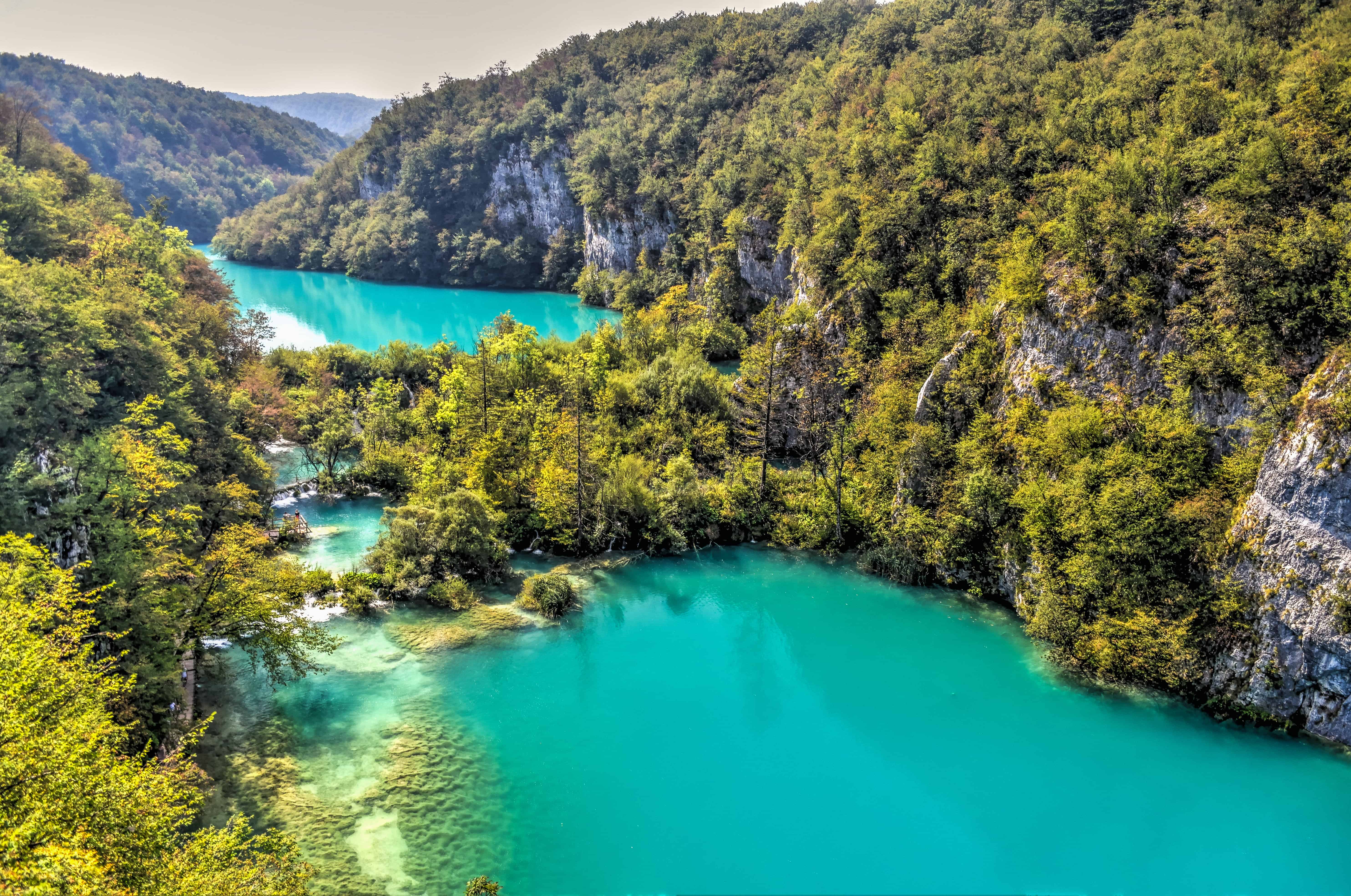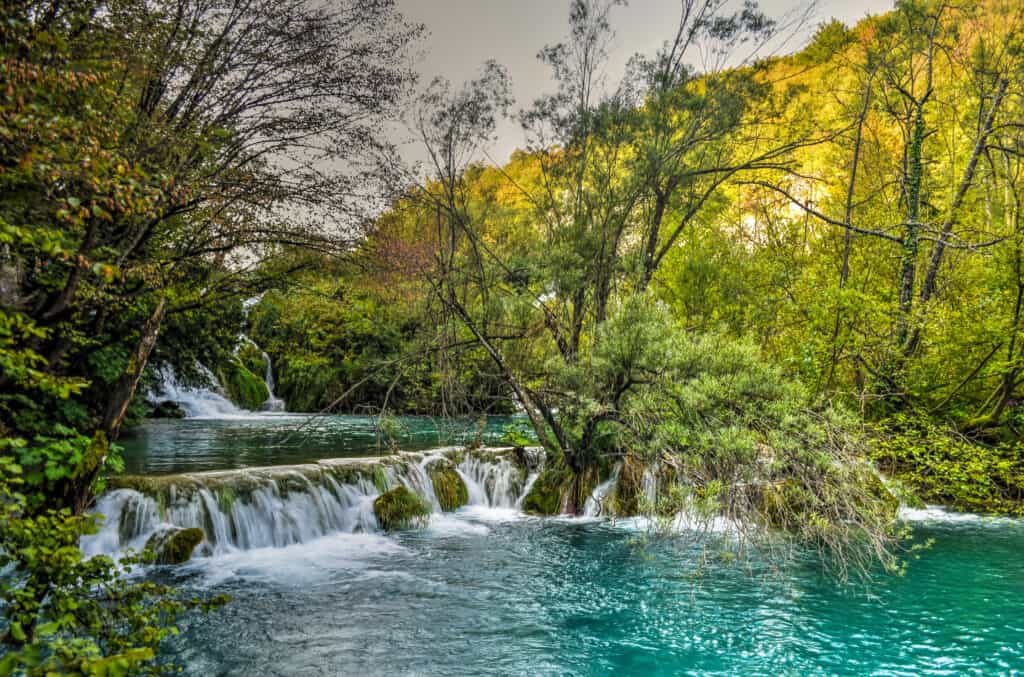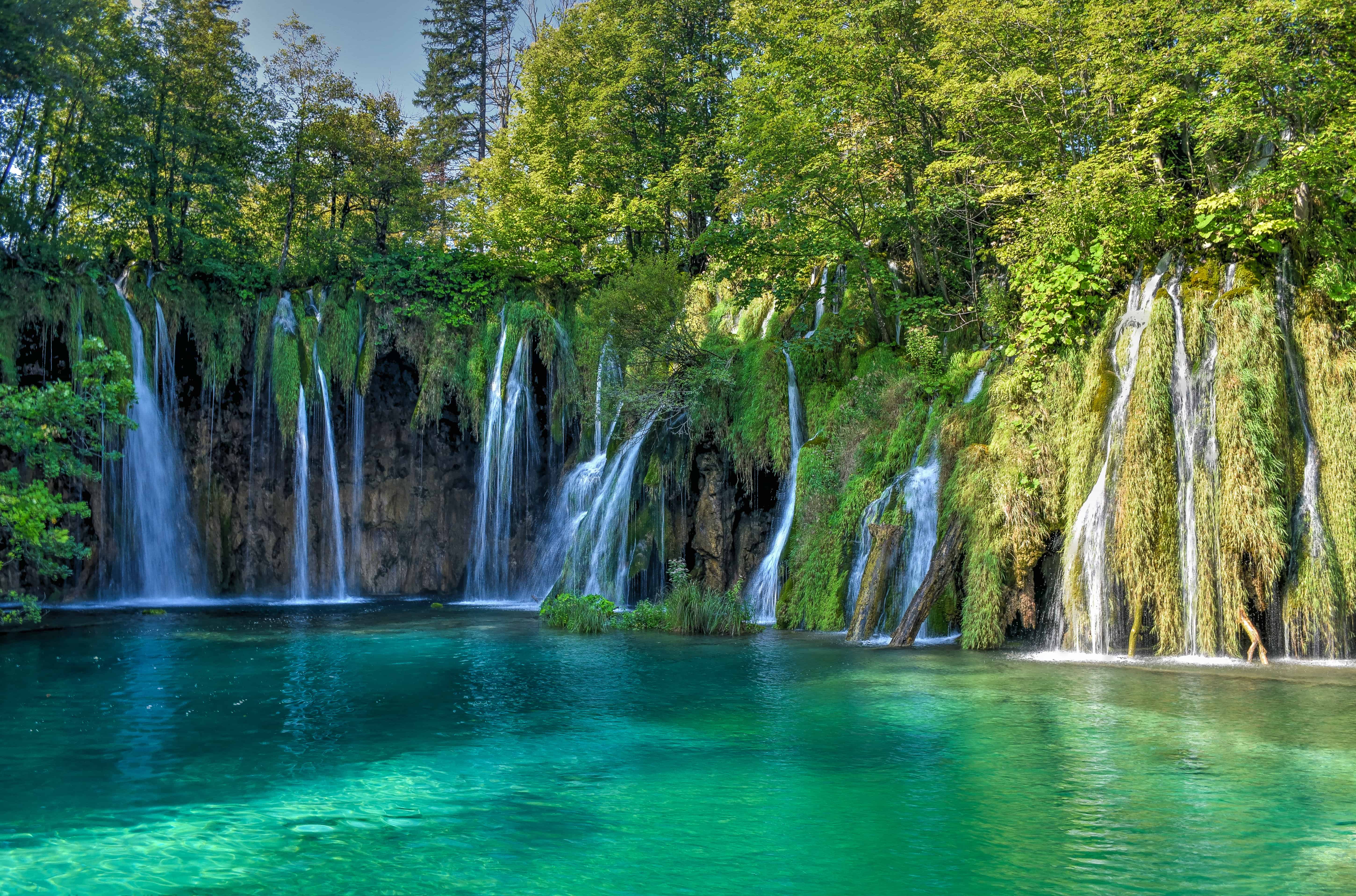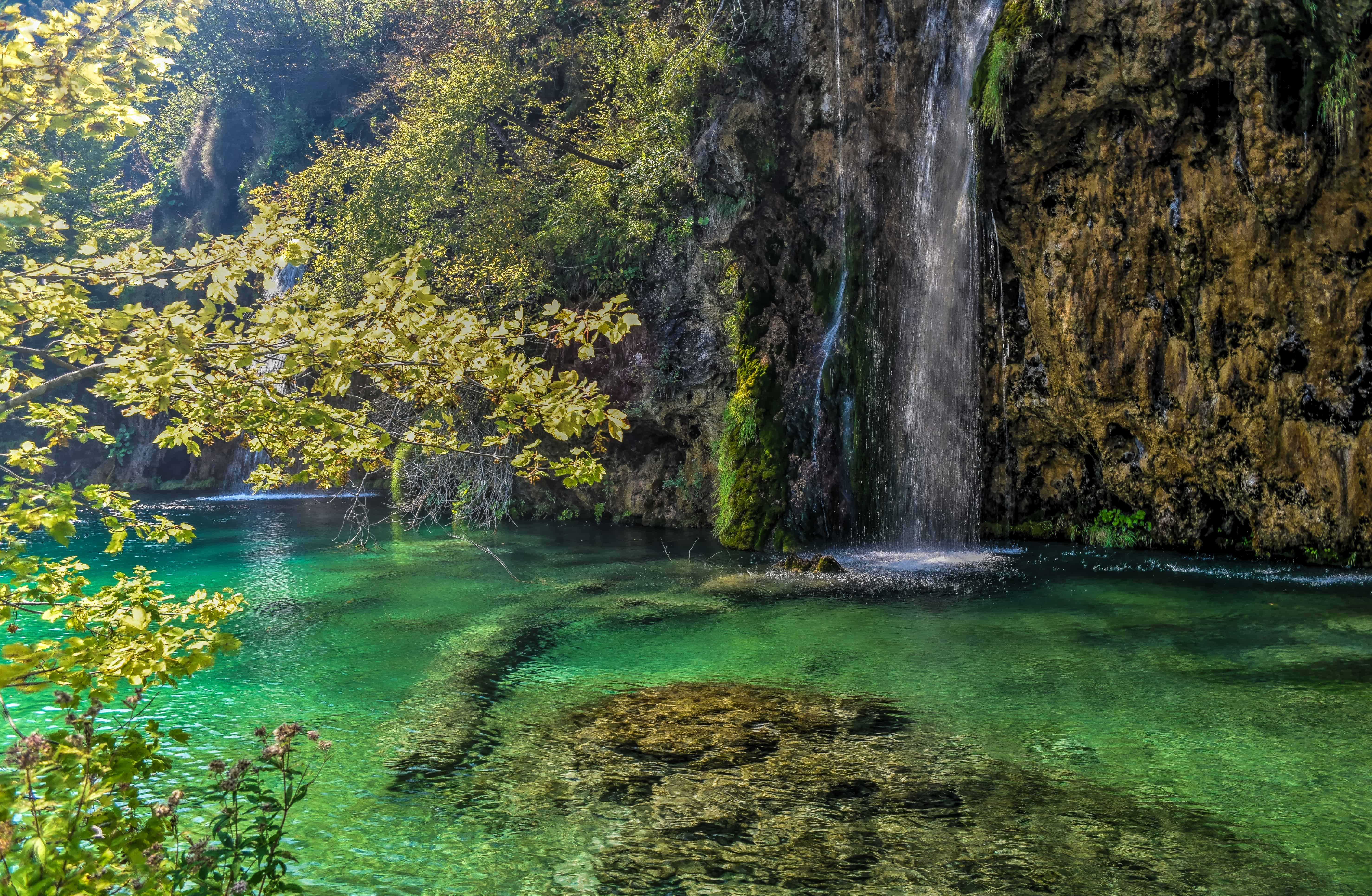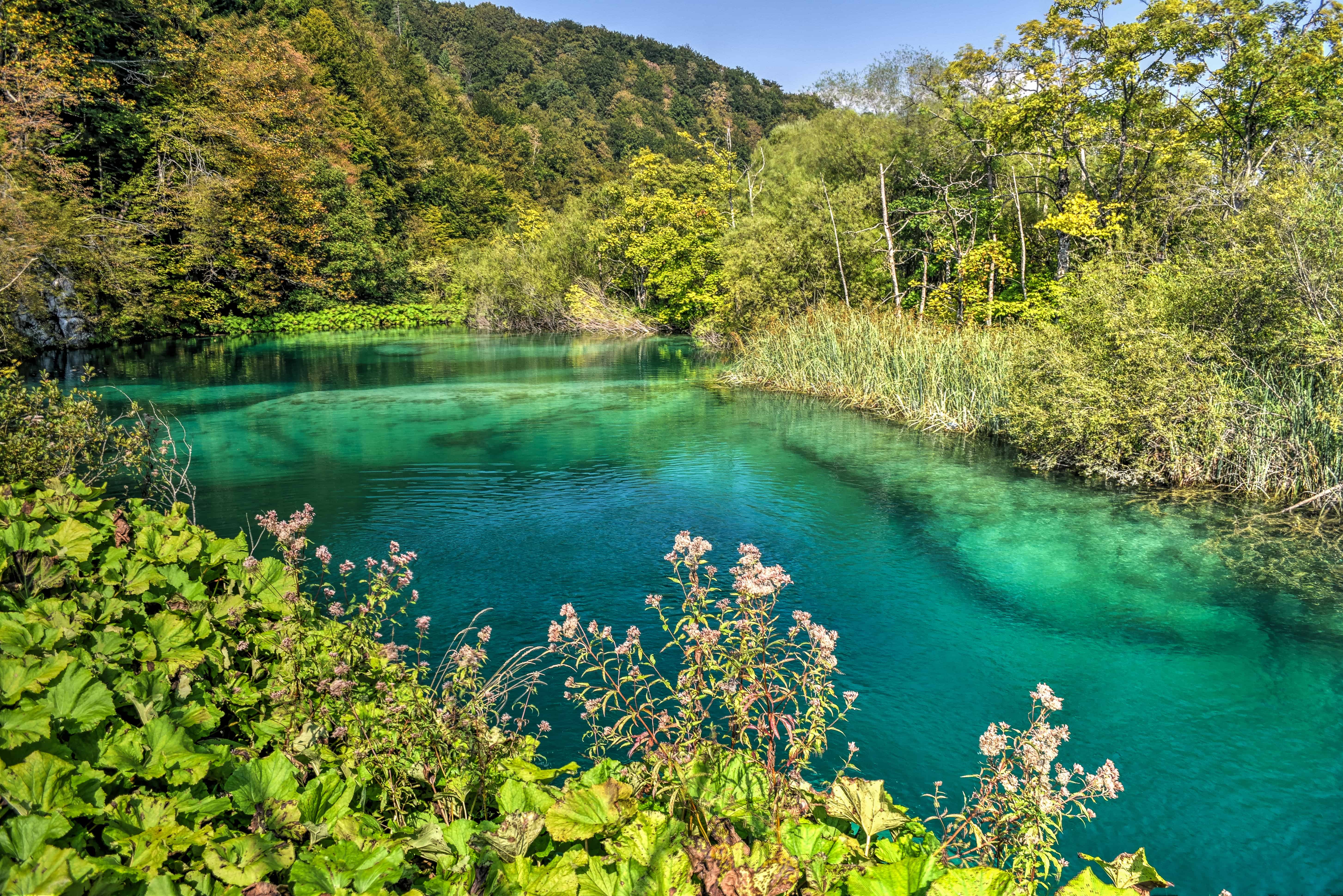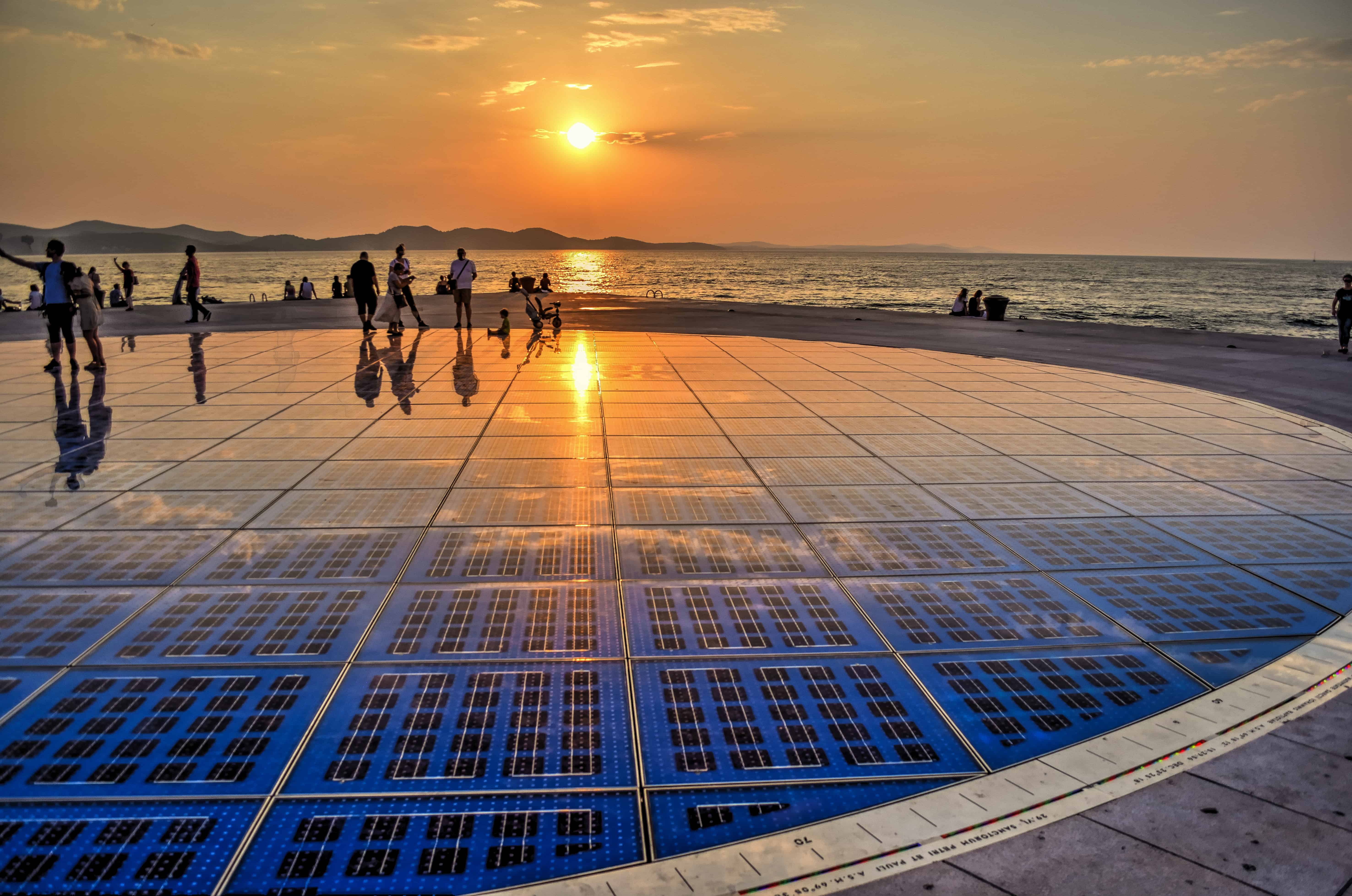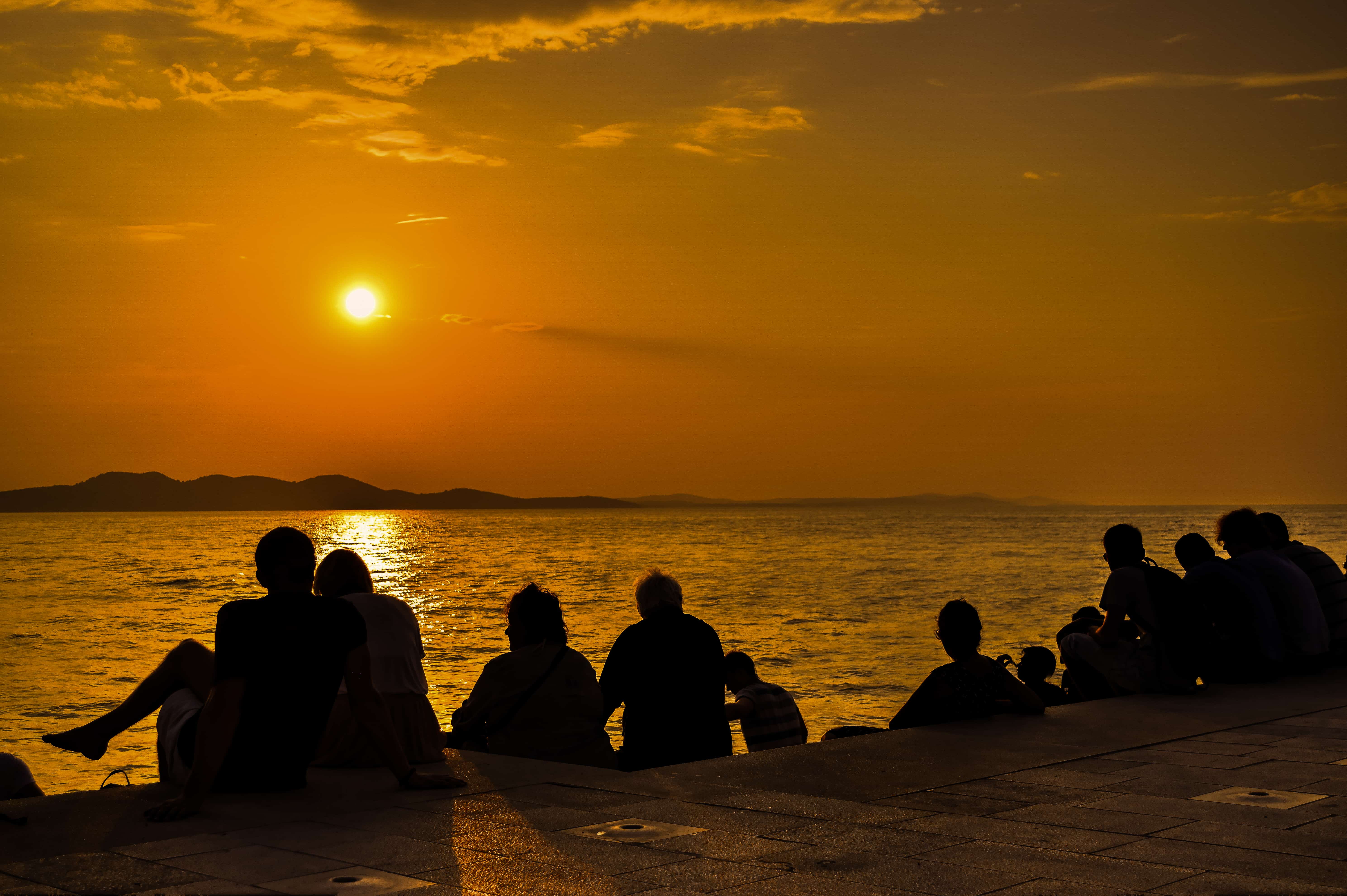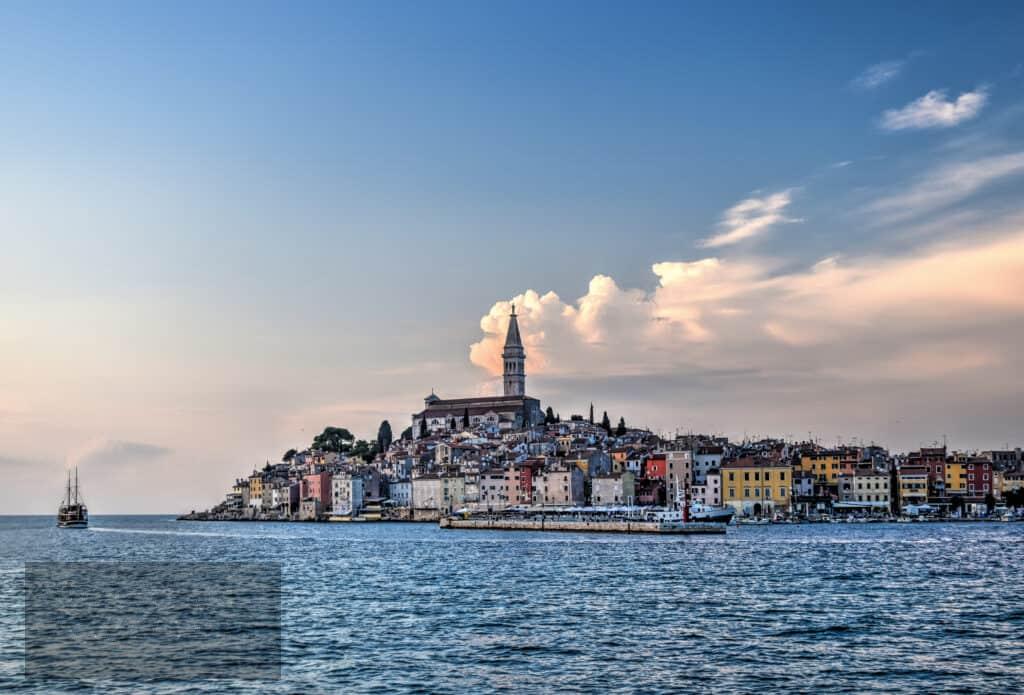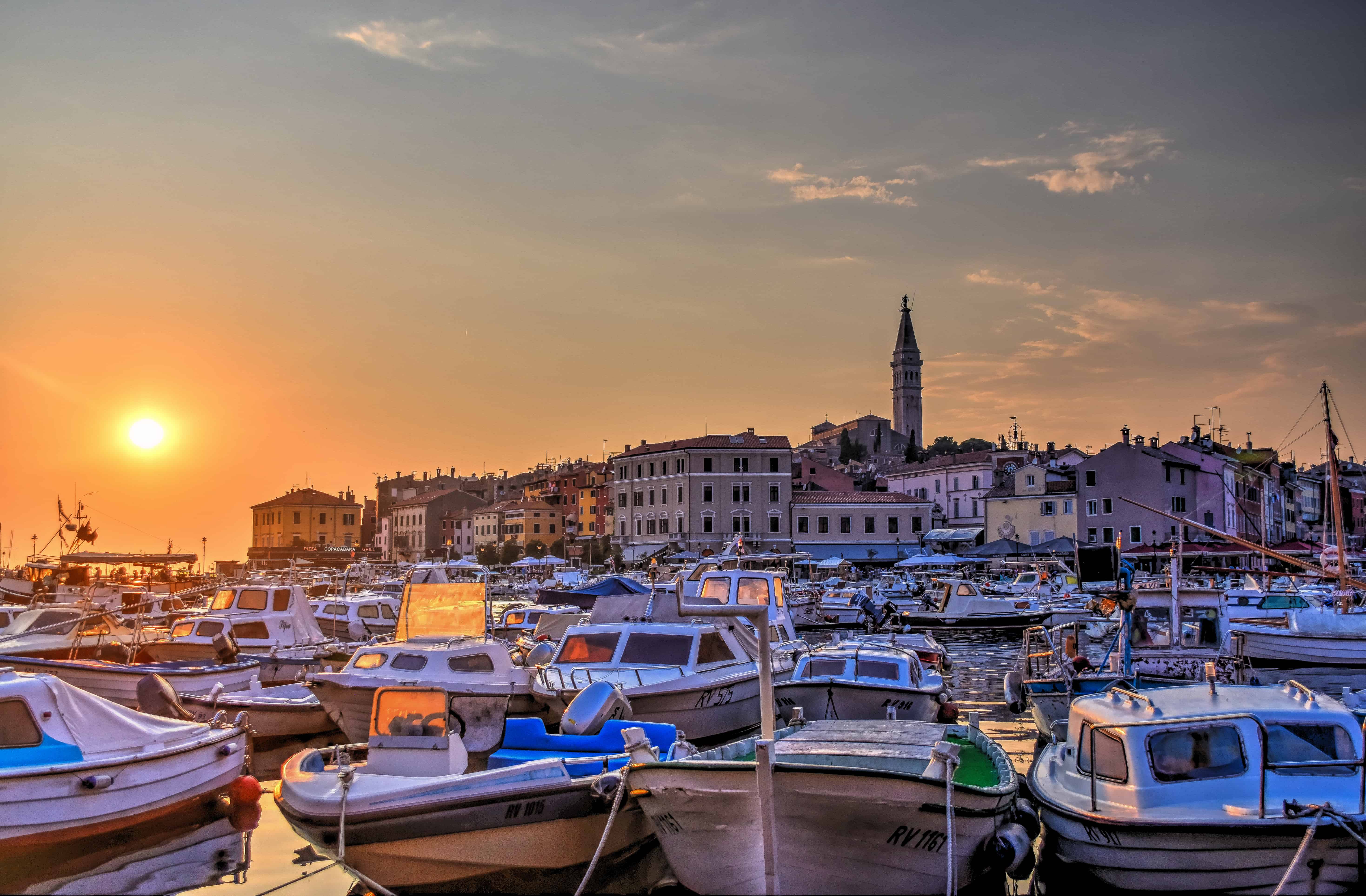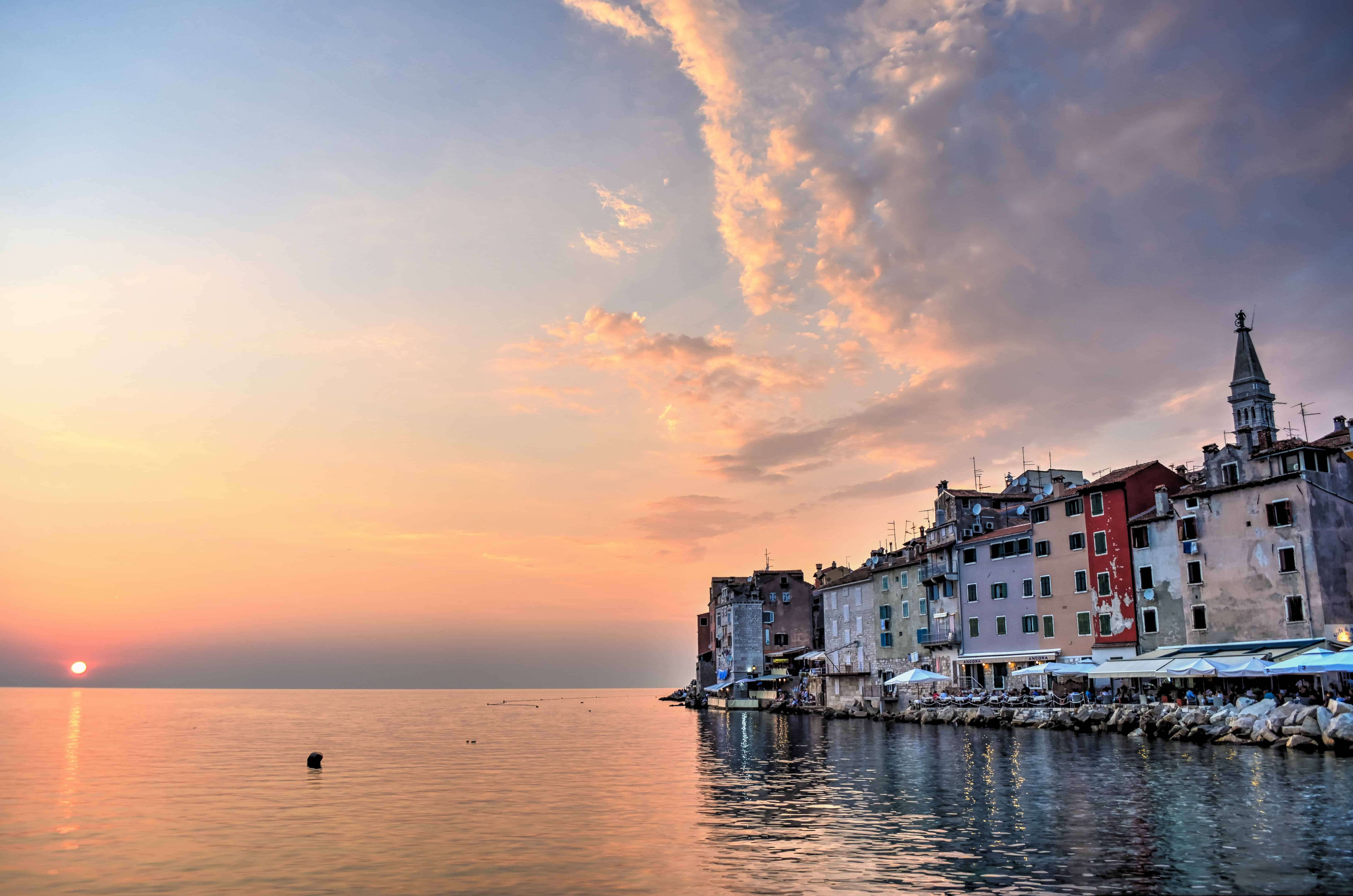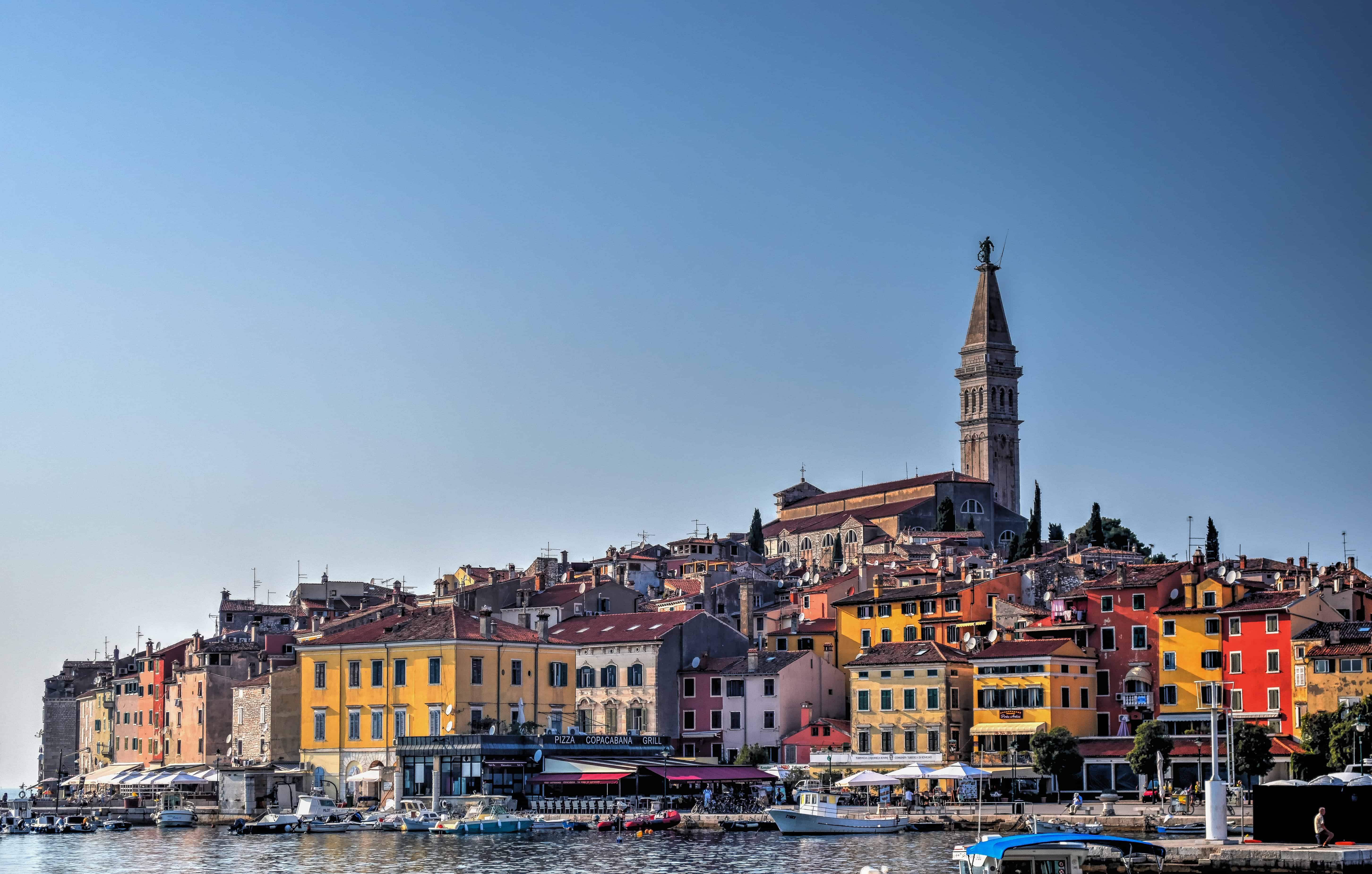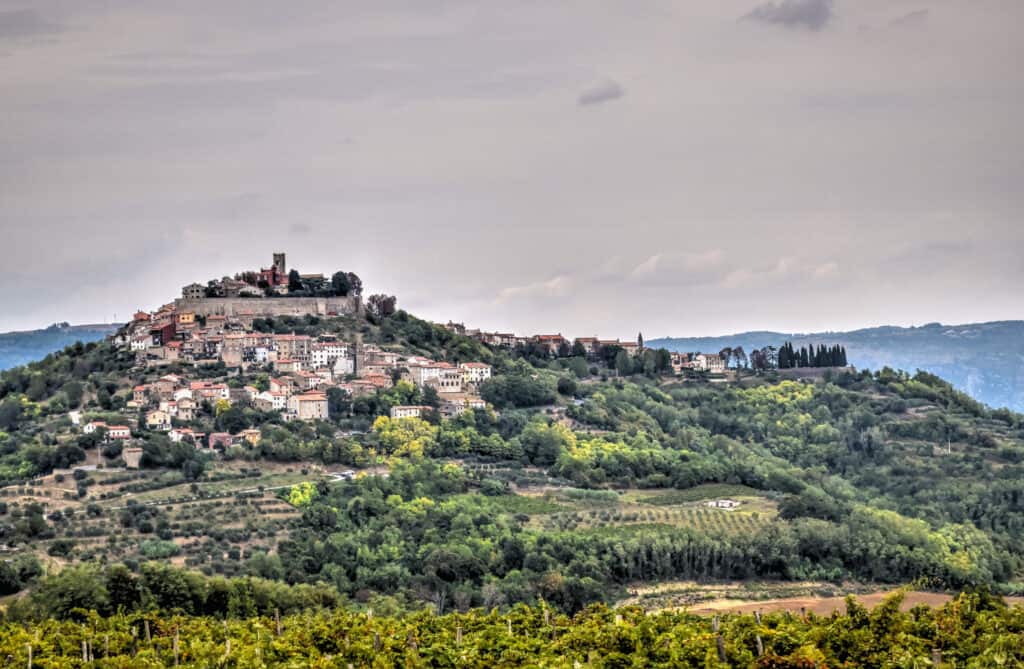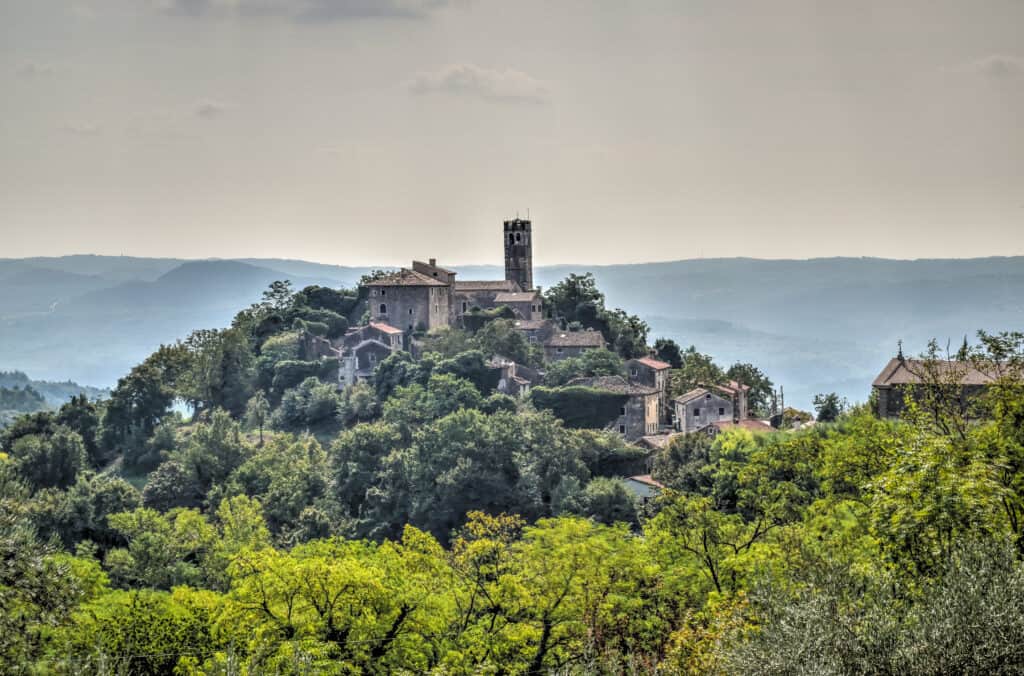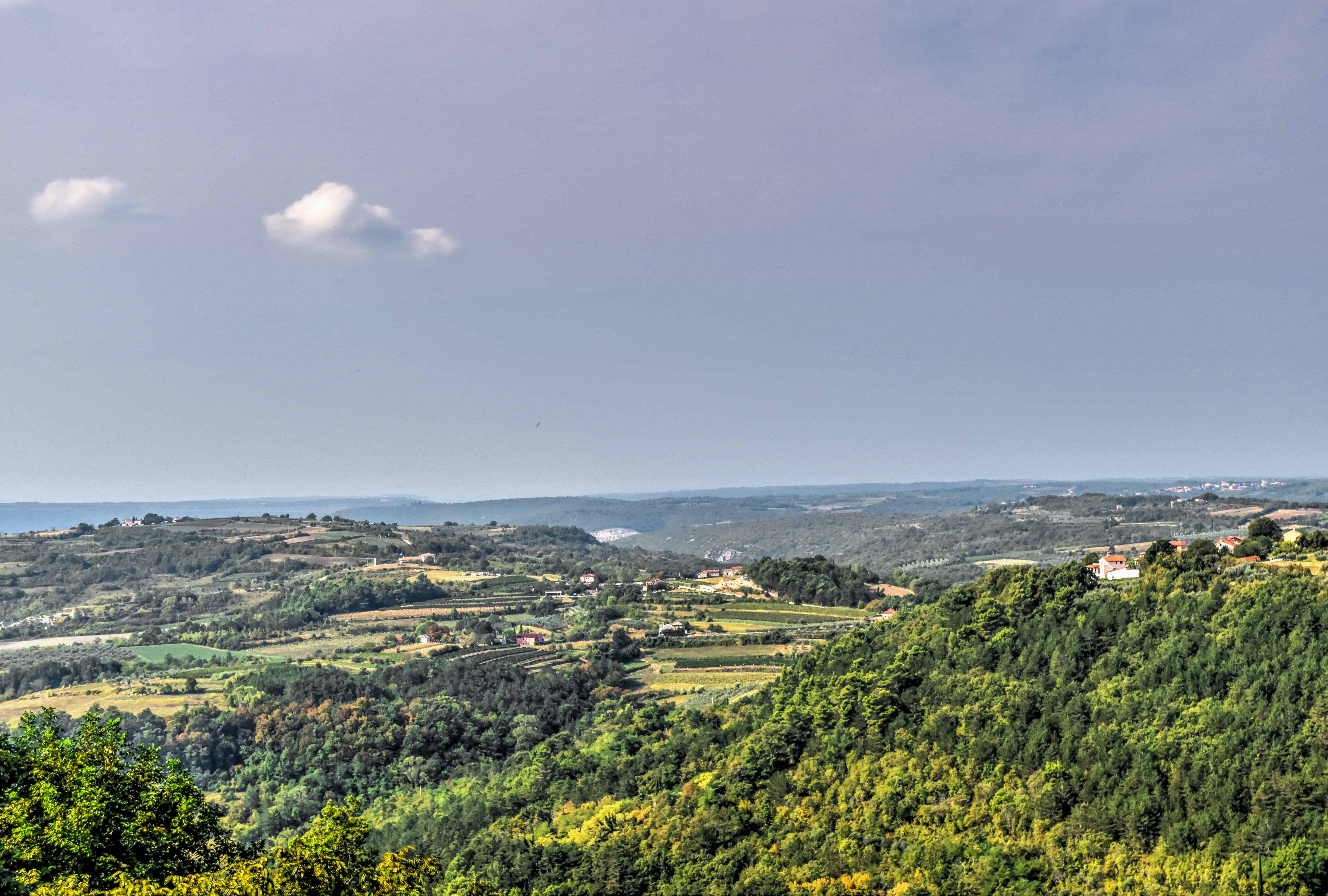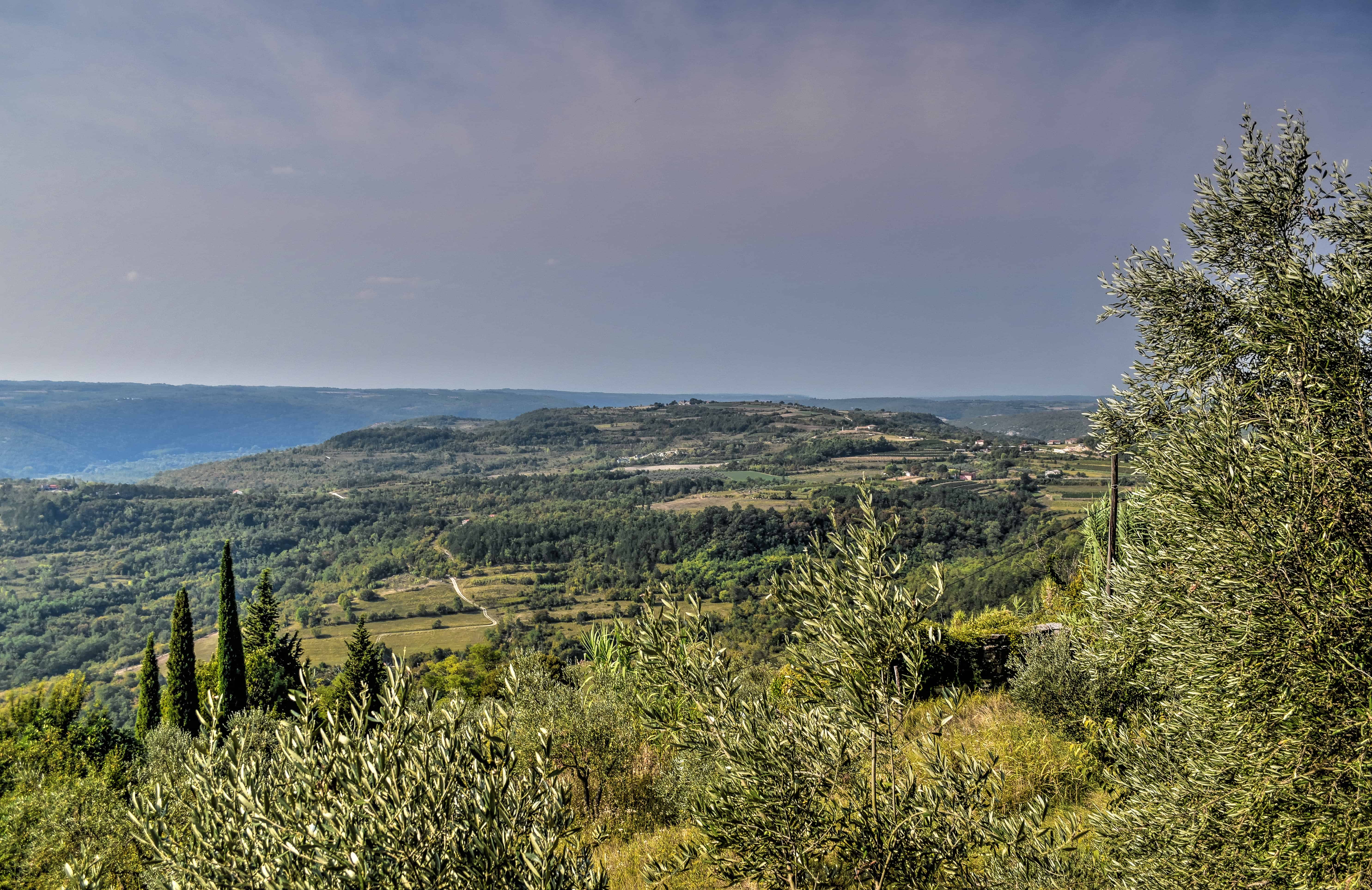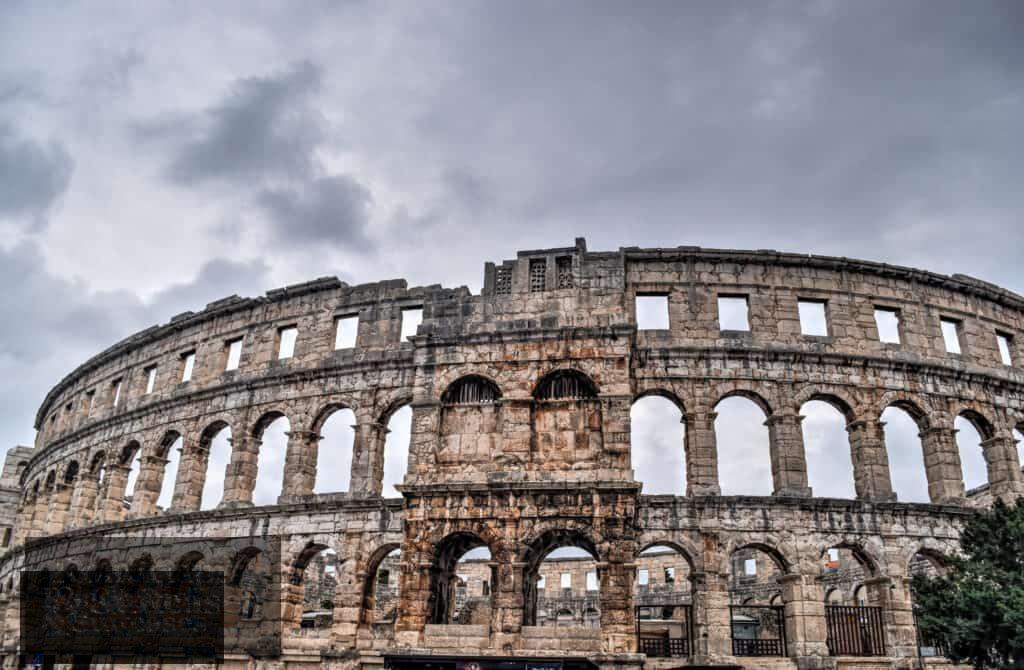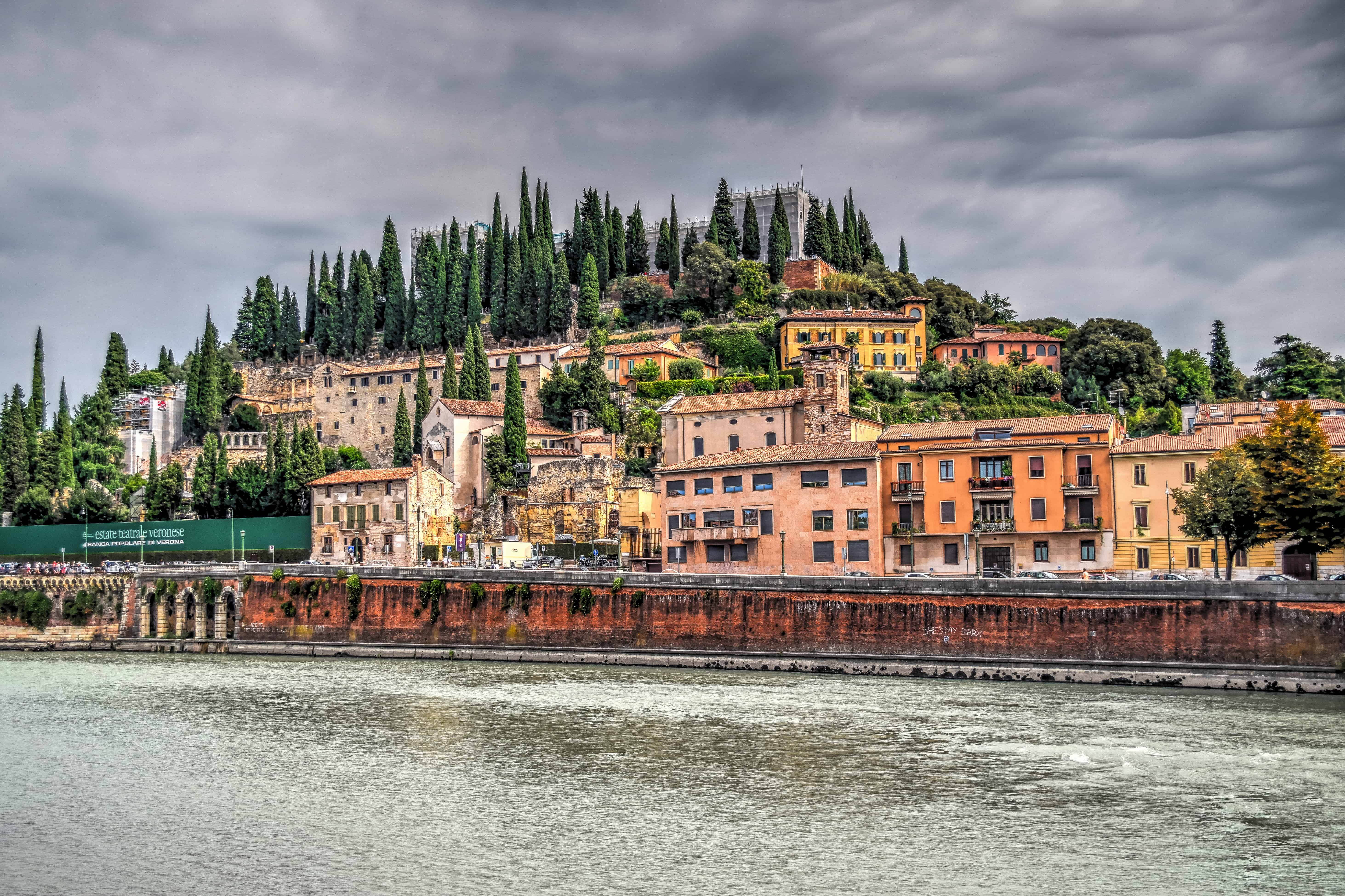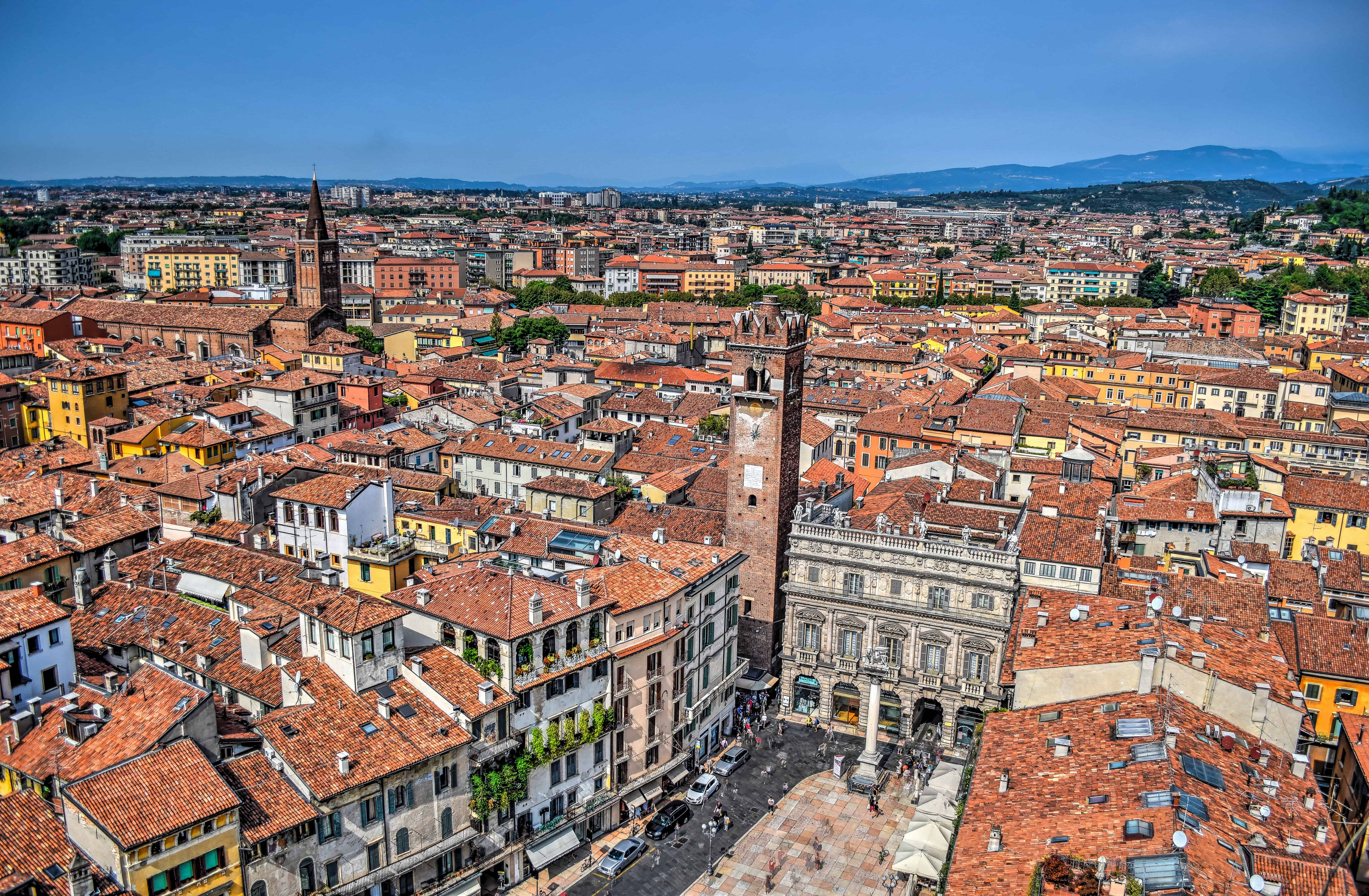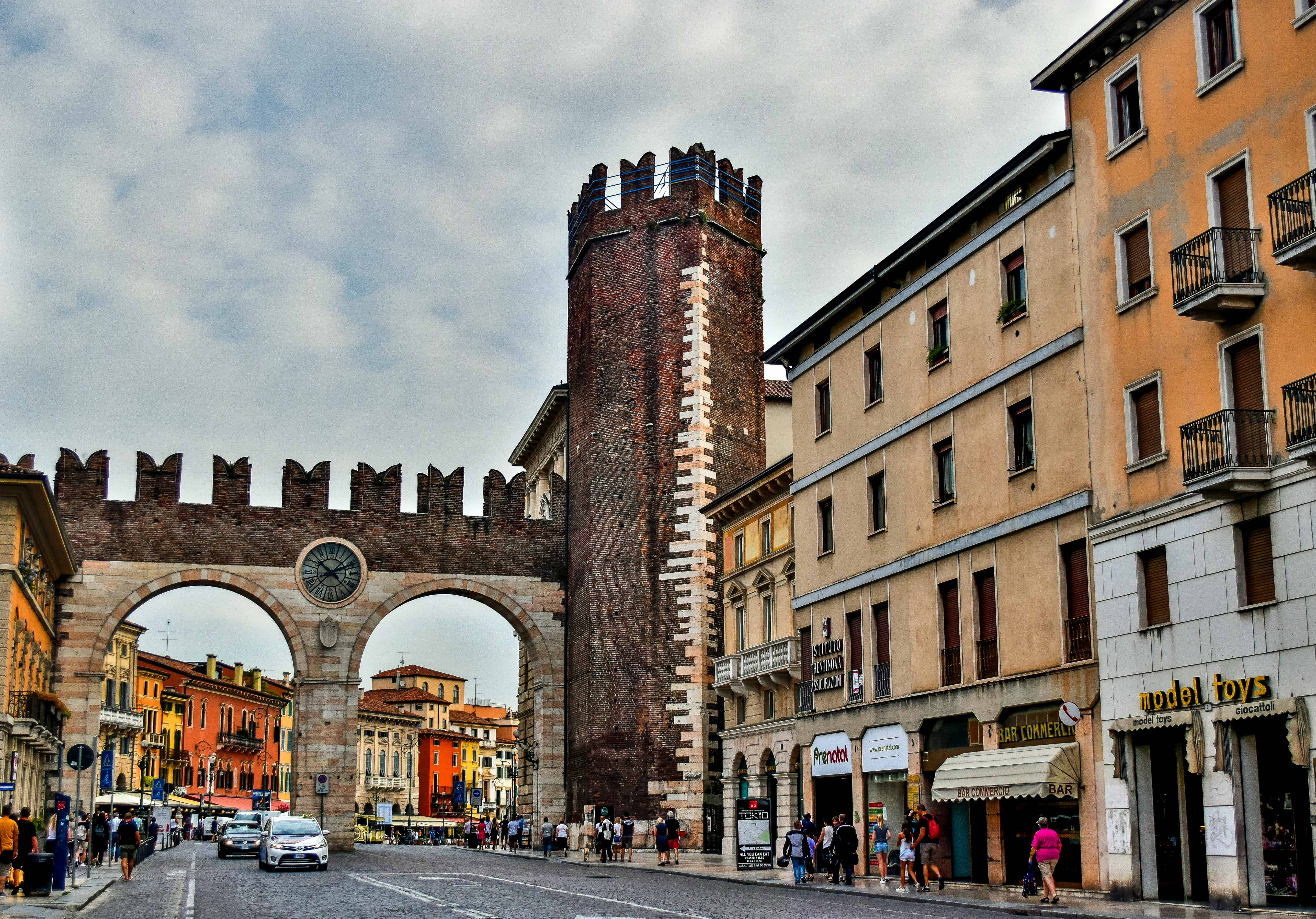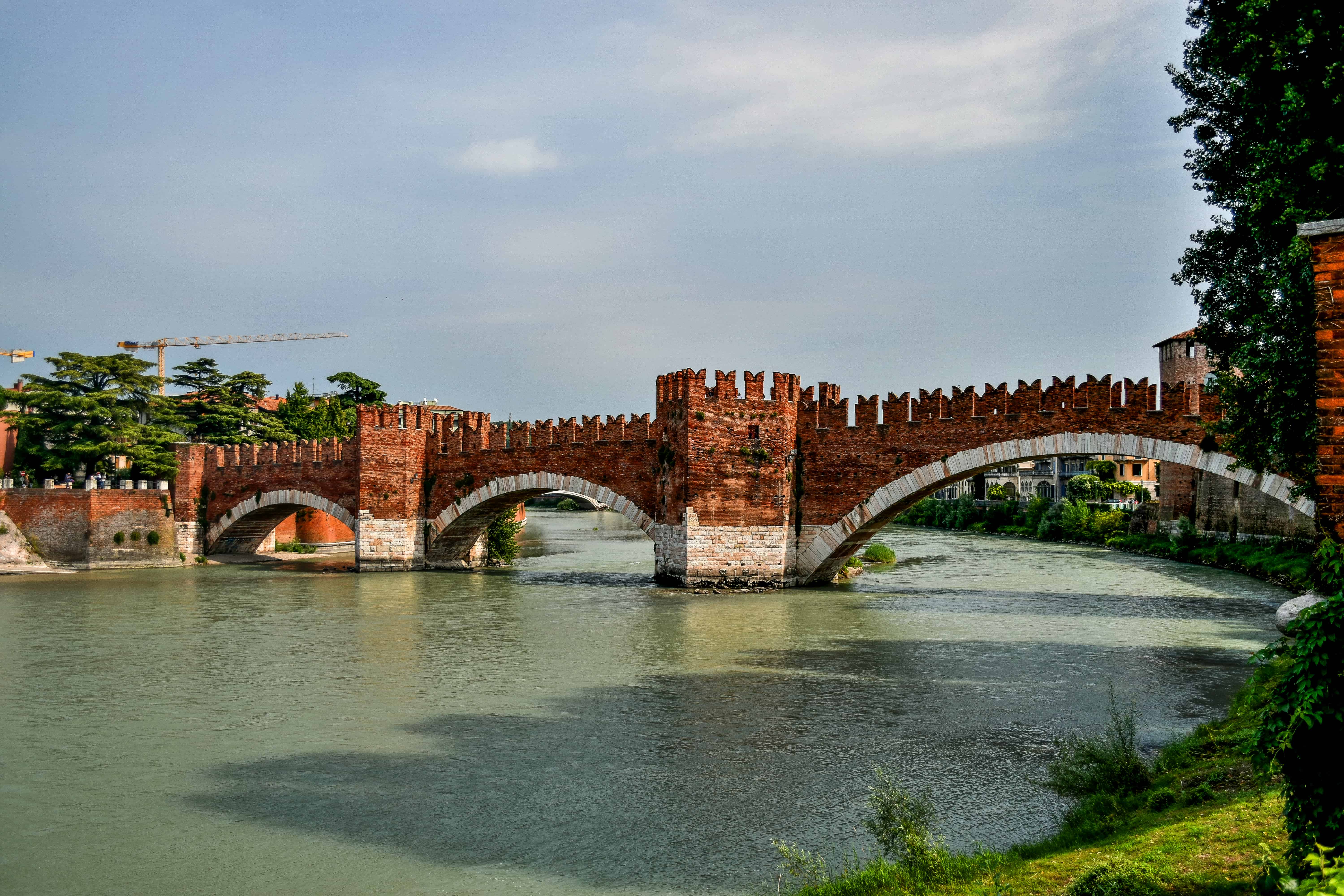Welcome to our Croatia & Slovenia Travel Guide Trip Highlights page, where we share our favourite Croatia & Slovenia sights, locations, and activities. Our trip highlights are presented in chronological order using a 3-star rating system, where a three-star rating indicates our favourite must-see sights and must-do activities.
Other pages in this section (Croatia & Slovenia):
Strolling along the canals of Venice **
Although we wouldn’t necessarily want to spend a full week in Venice as it can get overcrowded with tourists at times, we think that everyone should see it at least once. Despite its shortcomings, it still provides a unique setting that is hard to find anywhere else in the world. You will find no cars here; just pedestrians, gondolas and a wide variety of boat traffic (bus boats, taxi boats, police boats, ambulance boats, and yes, even trash-collecting boats). We highly recommend diverting from the main drags, as this will allow you to avoid the masses and reduce the likelihood of ending up in a heavily overpriced ristorante or osteria.
Lake Bled ***
Lake Bled is hard to describe without using words such as magical, picturesque and postcard picture-perfect. This small lake tucked away within the Julian Alps has all of the ingredients for the perfect little getaway: a castle perched high on a hillside, a pretty little island to visit, hiking trails, and several great restaurants. Bled Island and its baroque church are the centrepiece of Lake Bled and are definitely worth a quick visit by either renting a rowboat or taking a ride on a pletna boat. The quick hike up to Bled Castle will offer you unmatched views of the lake and the surrounding mountain landscape. There are several other hiking trails around the lake that also offer great views, including one on the south side of the lake where you can come back down using the Straza Bled toboggan track, which was a lot of fun by the way!
Vintgar gorge *
About an hour’s walk from Bled (or a 10-minute car ride) you can reach the entrance to Vintgar gorge, located within Triglav National Park. For about 1.6 km you walk on elevated boardwalks that crisscross inside the gorge along the gorgeous Radovna River. The walk back through the quaint town Zasip made for a pleasant stroll on our way back to Bled.
Strolling through Ljubljana in the rain **
The rain may not have been necessary, but it did create a unique ambience during our day trip to the city. Ljubljana, Slovenia’s compact, lively, and very picturesque capital, is the kind of city where it is simply fun to stroll around and explore without a long list of attractions to visit. The Ljubljanica River flows through the vibrant, colourful old town. Most of what you will see and do are clustered right along these riverbanks on pedestrian-only streets and bridges (including Jože Plecnik’s famous triple bridge). Prešernov Trg Square, with its bright pink Franciscan Church, in the heart of the historic city centre. Ljubljana Castle, standing on a hill above the city, is probably Ljubljana’s main attraction and is just a short hike up from the old town (or you can ride up the funicular). The castle’s tower and ramparts offer unmatched aerial views of the city. Finally, we also recommend the short walk to Neboticnik (a skyscraper) with a rooftop terrace for a different aerial view over Ljubljana that includes the castle. It’s a great place to relax with a drink after a day of strolling around the town. Without a doubt, Ljubljana is truly is one of Europe’s best-hidden gems.
Dining on the balcony of our Dubrovnik AirBnB rental (***)
Dubrovnik, overlooking the calm blue Adriatic, is one of the world’s most magnificent walled cities. The compact Old Town is surrounded by massive walls punctuated with turrets, towers and gates enclosing pedestrian-only streets, which can easily be explored in a few hours. Walking along the 13th-century city walls is a must as they provide lofty vantage points all over the terracotta rooftops of the Old Town and out to sea. We highly recommend doing this activity (which takes about an hour) either early in the morning or late in the afternoon to avoid the throngs of midday cruise passengers (if Dubrovnik has one drawback, it’s definitely the mass of tourists that can appear midday). Afterwards, stroll along the limestone-paved Stradun, the main pedestrian thoroughfare through the Old Town, running from Pile Gate in the west to Ploce Gate in the east.
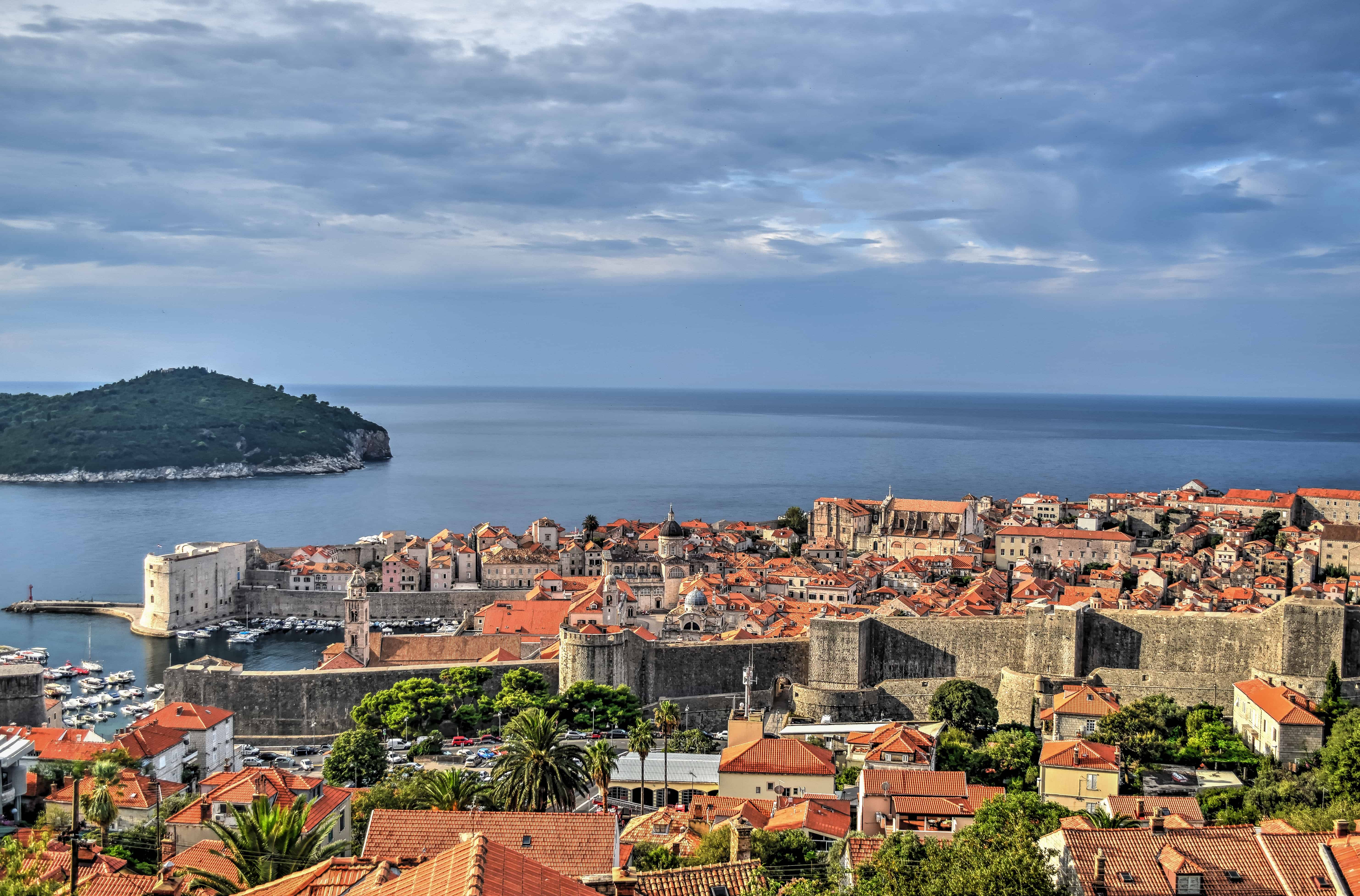
Although the old town is fairly flat, the city to the east rapidly rises up on the flanks of Srd mountain. Should you find accommodation in this area of the city, you’ll have to climb several flights of stairs every day, but you will be rewarded with stunning views of the city and the Adriatic sea behind it. You can also ride a cable car up to the top of Srd mountain for more stunning views of Dubrovnik and the Elafiti Islands (we didn’t try the cable car as the views from our balcony were already quite stunning).
Boozing at Busa *
Looking for a nice place to have a drink and watch the sunset? Look no further than the two outdoor Busa bars sandwiched between the sea and Dubrovnik’s southern outer city wall. They’re built up on a series of levels on the rocks overlooking the sea and are accessed through a tiny doorway through the city walls. They are barely advertised (you can easily miss the small doorways), so they somewhat have the feel of secret bars that only a lucky few know about.
Cycling on Mljet island *
We highly recommend this day trip from Dubrovnik if you’re in town for a few days. Mljet is one of the most picturesque of all the Adriatic islands and is an easy day trip from Dubrovnik during the summer when ferries are frequent. Mljet is the most thickly forested island in the Adriatic and the northwestern third of the island is a national park with two inland lakes and miles of cycling and walking trails. In the middle of the largest lake, Veliko Jezero, is the tiny islet of Sv Marija (St Mary) where lies a former Benedictine monastery dating from the 12th century, that is accessible by regularly scheduled small boats and is included in the price of admission. The best way to get to Mljet is via the passenger ferry, the Nona Ana, which runs between Dubrovnik and Polace (the main entrance to the national park on Mljet), which leaves in the morning and returns in the afternoon. The ferry ride takes approximately 90 minutes each way but provides lovely views of the coast and the other smaller islands. Cycling and kayaking and the best ways to explore the national park area on Mljet.
Driving around Kotor Bay and visiting the fortified town of Kotor in Montenegro ***
Heading south to Kotor is another excellent day trip from Dubrovnik. Kotor is a fortified town on Montenegro’s Adriatic coast, in a bay near the limestone cliffs of Mount Lovcen. The best way to experience the old town is to just lose yourself in its narrow cobbled streets beginning at the Sea Gate, just off the bay. With some extra time and if you feel like having a good climb, we highly recommend climbing the steep Ladder of Kotor, a spectacular hiking trail that includes over 70 switchbacks that take you up the side of the mountain, over the Krstac Pass. It offers phenomenal views across the old town, the Bay of Kotor and beyond.
Not only was Kotor worth the trip, but so was driving along the coast of Kotor Bay. In particular, about half an hour north of Kotor, you’ll find the incredibly photogenic town of Perast with its two islets, each home to perfectly formed medieval chapels.
Counting cats *
If you are a fan of felines, you are more than in luck. Both Dubrovnik and Kotor have to be the European cat capitals. It was not uncommon for us to cross nearly a dozen cats when climbing up the steps between the old town and our apartment in Dubrovnik. Several cats were always hanging around the Pile Gate. Many of them seem to be taken care of by tourists and locals alike and it’s not uncommon to see kittens too. If you didn’t get enough cat exposure in Dubrovnik, you should make your way to Kotor in Montenegro, which has not only become famous for cats but cats have even managed to become its unofficial symbol with cat-themed souvenirs found for sale throughout the old city. The historic town of Kotor hosts hundreds of stray cats, but don’t let their homelessness fool you. Like in Dubrovnik, they’re looked after and adored by locals and visitors alike – they all look healthy and well-cared for, and you can spot bowls of food and water left by shop owners.
Plitvice Lakes National Park **
Plitvice Lakes National Park (NP) consists of an ensemble of 16 natural lakes and is a UNESCO heritage site. Located roughly halfway between the capital city Zagreb and Zadar on the coast (we used Zadar as our base in this area and visited the NP as a day trip from there; approximately 2 hours driving each way). The unique turquoise lakes are a definite must-see in Croatia as they are inter-connected by a series of beautiful waterfalls and surrounded by lush forests. The park is accessible by dirt paths and wooden walkways. There are two different entrances and several different suggested trails. We recommend allocating at least half a day to explore the area, and a full day would be even better. We also recommend getting an early start to avoid the masses that can clog up some of the narrower walking paths during midday. Note, however, that swimming in the Plitvice lakes is strictly forbidden.
Zadar’s sea organ and solar-powered light show *
Although we chose to stay in Zadar primarily as a base for visiting the Plitvice Lakes NP, we found that it is definitely worth a visit in its own right. Like most Croatian cities that line the warm waters of the Adriatic, Zadar has a beautiful waterfront area with a long promenade and its historical centre is crammed onto a narrow peninsula. The interesting sites are can all be found in a compact area that can easily be visited within a few hours. Zadar’s main draw is its wonderful waterfront, which culminates with the Sea Organ and Sun Salutation (both Nikola Bašic artistic creations). The Sea Organ is a musical instrument powered by the waves: the higher the waves are, the louder and more intense the music is. The Sun Salutation is a solar-powered glass plate on the floor of the promenade that lights up at night. The waterfront promenade is also a great place to just relax and watch the sunset. Zadar also has roman ruins and the Old Town is surrounded by high Venetian wall defences.
Driving around in rural Istria ***
Although Dubrovnik and Plitvice Lakes NP were the initial draws to Croatia, we absolutely fell in love with Istria, a northwestern region of Croatia located on a peninsula across the Adriatic from Venice. Often referred to as the Croatian Tuscany, Istria is a great place for foodies and wine lovers, in addition to being a truffle haven. The picturesque old town of Rovinj, itself set on a small hilly peninsula, was our base for three nights. It’s a coastal town like no other and will definitely provide you with amazing photo-ops with its pastel-coloured houses seemingly rising straight out of the sea (see below).
On the southern end of the Peninsula, you can find the city of Pula, which has one of the best-preserved Roman amphitheatres in the world. Our favorite day was probably when visiting the hilltop rural towns that can visited by driving inland: the abandoned town of Zavrsje, the artist heaven of Groznjan, and the medieval gem sitting atop a staircase of 1052 steps, Motovun.
The rest
Although probably best known for its Shakespeare associations, Verona is rich with pretty piazzas and architecturally fascinating bridges, a remarkably well-preserved 1st-century amphitheatre, and makes for a great day trip from Venice (90 min train ride each way). Although very much deserving of a visit, it didn’t quite make our trip highlights.
On our way to Rovinj from Zadar, we stopped for a few hours (and lunch) in Opatija, where Croatian coastal tourism began over a century ago. During the Austro-Hungarian empire, Opatija was the playground for European royalty. It’s worth a quick stop to walk along the waterfront promenade and to admire the typically Viennese architecture of the buildings along the main drag (opposite the promenade).
Areas not covered in this trip
Split, a town on Croatia’s Dalmatian Coast, is known for its beaches and the fortresslike complex at its center, the Diocletian’s Palace, erected by the Roman emperor in the 4th century. Split would definitely have been next on our list of destinations, but alas, choices needed to be made. Additionally, we would have loved to spend more time visiting the Croatian islands, particularly Hvar and Korkula. Although Plitvice Lakes NP was amazing, it would also have been nice to visit a water-filled NP where you can actually take a swim, Krka NP. The waterfall network isn’t as extensive as in Plitvice, but it can provide you with a nice reprieve from the summer heat. Last but not least, Zagreb, Croatia’s charming capital. We had originally planned to spend a few hours in Zagreb while transiting between Bled and Dubrovnik, but we ended up only having an hour layover.
< Back to Croatia & Slovenia Itinerary
Go to Practical Information >
